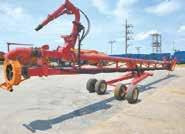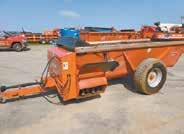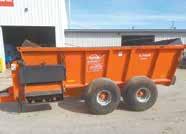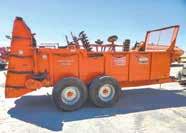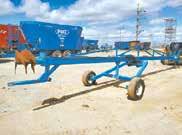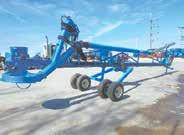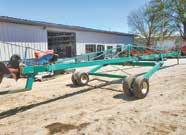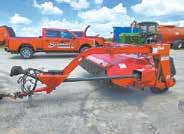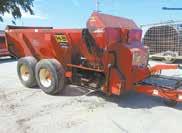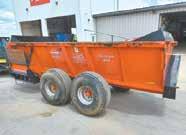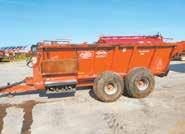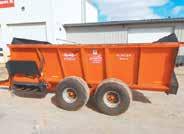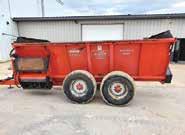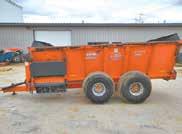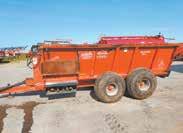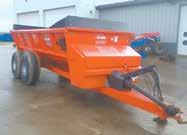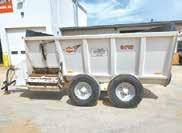26, 2024 Volume 26, No. 17
“All dairy, all the time”™

26, 2024 Volume 26, No. 17
“All dairy, all the time”™
Franke assists with chopping using motorized wheelchair, coaster wagon
By Amy Kyllo amy.k@star-pub.com
KELLOGG, Minn. —
On Oct. 6, Evers Dairy got help with hauling corn silage. With the sun shining in the sky, one of the dairy’s CLAAS self-propelled choppers loaded a Radio Flyer coaster wagon pulled by a John Deere 4440-themed wheelchair. Driving was 9-year-old Memphis Franke. His parents, Kevin and Tracy, were on hand to video the scene.
“He had a huge smile,” Tracy said. “He felt like he was truly helping.”
Memphis, who wants to be a dairy farmer when he grows up, has Duchenne muscular dystrophy, which
causes muscle degeneration over time. According to the National Library of Medicine, DMD is one of the most severe forms of inherited muscular dystrophy. He was diagnosed at the age of 3, and, in 2021, he lost his ability to walk and started using a wheelchair.
“We have to make the best of it,” Tracy said. “We got two options. We can either be sad or we can help him have the best life he can have. He’s happy when he gets to farm, and if allowed, he would skip school every day to farm.”
Memphis had mentioned earlier in the year that he would like to help chop.
Turn to FRANKE | Page 2

Four farmers share transition experiences
By Stacey Smart stacey.s@dairystar.com
MADISON, Wis. — Transferring a farm from one generation to the next is a process that takes time, planning and commitment from both sides.
This was the topic of a panel Oct. 3 at World Dairy Expo in Madison entitled, “Securing the Future: Lessons in Dairy Farm Transitions.” Four dairy farmers shared experiences.
Moderated by Bruce Vande Steeg of Bridgeforth LLP, panelists included Ben Smith of Cool Lawn Farm

ferer, transferee or both.
in Virginia; Myron Czech of New Heights Dairy LLC in Minnesota; Hannah Lansing of J & K Dairy LLC in Washington; and Steve Ohlde of Ohlde Family Farms in Kansas.
Smith’s family milks 780 cows and farms 3,000 acres. The Ohlde family milks more than 4,000 cows on six sites
in two states and farms 5,000 acres. The Czechs milk 550 cows and farm 1,200 acres.
Czech’s rst transition occurred 18 years ago when he brought his son into the operation. The two remain partners and purchased another farm over the past 18 months.
Ohlde and his wife transi-
tioned the farm to two of their sons in 2007 and to another son a few years later.
Both Czech and Ohlde once were transferees. Ohlde was in his early 20s when he went into partnership with his dad.
“My dad was really good about turning a lot of things over to me,” Ohlde said. “As
I started bringing my boys in, I saw that as a benet. It made it easier to step away from some of those roles.”
Czech said he learned a good way to keep an employee is to let them choose their specialty.
“That prepped me for when my son was ready to enter,” he said. “We let him navigate his way into what he liked to do.”
Czech stepped away from day-to-day management, and his workload changed a lot.
“I gave up the thing early on that I loved the most, which was the genetics,” Czech said. “I realized then I could probably give up other things too and still be happy.”
Czech does agronomy and accounting work for the farm.
ISSN Print: 2834-619X • Online: 2834-6203 522 Sinclair Lewis Ave. Sauk Centre, MN 56378
Phone: 320-352-6303 Fax: 320-352-5647 www.dairystar.com
Published by Star Publications LLC
General Manager/Editor
Mark Klaphake - mark.k@dairystar.com
320-352-6303 (ofce) 320-248-3196 (cell) 320-352-0062 (home) Ad Composition - 320-352-6303
Nancy Powell • nancy.p@dairystar.com
Karen Knoblach • karen.k@star-pub.com
Annika Gunderson • annika@star-pub.com
Cheyenne Middendorf • cheyenne@star-pub.com
Nadiia Griepentrog • nadiia@star-pub.com
Editorial Staff
Stacey Smart - Assistant Editor 262-442-6666 • stacey.s@dairystar.com
Danielle Nauman - Staff Writer 608-487-1101 • danielle.n@dairystar.com
Dan Wacker - Staff Writer 608-487-3858 • dan.w@dairystar.com
Tiffany Klaphake - Staff Writer 320-352-6303 • tiffany.k@dairystar.com
Amy Kyllo - Staff Writer amy.k@star-pub.com
Emily Breth - Staff Writer emily.b@star-pub.com
Sarah Middendorf - Staff Writer sarah.m@star-pub.com
Advertising Sales
Main Ofce: 320-352-6303 Fax: 320-352-5647
Deadline is 5 p.m. of the Friday the week before publication Sales Manager - Joyce Frericks 320-352-6303 • joyce@saukherald.com
National Sales Manager - Laura Seljan (National Advertising, SE MN) 507-250-2217 • fax: 507-634-4413 laura.s@dairystar.com
Assistant Sales Manager - Kati Schafer (Northeast WI and Upper MI) 920-979-5284 • kati.s@dairystar.com
Adam McClary (SW MN, NW Iowa, South Dakota) 605-951-5270 • adam.m@dairystar.com
Mike Schafer (Central, South Central MN) 320-894-7825 • mike.s@dairystar.com
Hannah Ullom (Western Wisconsin) 715-933-4045 • hannah.u@dairystar.com
Julia Merten (Southeast MN and Northeast IA) 507-438-7739 • julia.m@star-pub.com
Bob Leukam (Northern MN, East Central MN) 320-260-1248 (cell) bob.l@star-pub.com
Mark Klaphake (Western MN) 320-352-6303 (ofce) • 320-248-3196 (cell)
Deadlines
The deadline for news and advertising in the Dairy Star is 5 p.m. Friday the week before publication.
Subscriptions
One year subscription $42.00, outside the U.S. $200.00. Send check along with mailing address to Dairy Star, 522 Sinclair Lewis Ave., Sauk Centre, MN 56378. Advertising Our ad takers have no authority to bind this newspaper and only publication of an advertisement shall constitute nal acceptance of the advertiser's order.
Letters Letters and articles of opinion are welcomed. Letters must be signed and include address and phone number. We reserve the right to edit lengthy letters. The
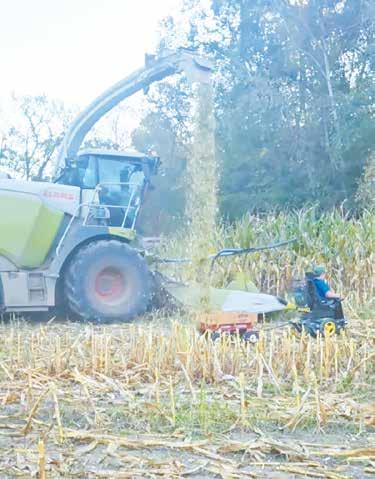
earlier in the year, but this was his rst day helping to haul corn on his own.



On Oct. 6 when part of the crew at Evers Dairy was chopping at the farm of Memphis’ grandparents, Mark and Janet, the Franke family got their chance.
Evers Dairy is owned by Memphis’ family and includes his grandpa, Mark Evers, and Mark’s brothers, Jerry, Philip, and Wayne. This harvest season, between hay and corn, Memphis rode along in the chopper several times.
Memphis is their “No. 1 rider” said his great-uncle, Wayne Evers.
“It’s always so fun listening to him, because he always knows all his stuff about farming,” Evers said.
“He knows all his numbers and knows who’s all driving the trucks. The questions he has are just really interesting.”
That day after lunch Memphis left his dessert to the wind when it came time for chopping.
“When the chopper pulled in, he dropped the pie and out the door he went,” Evers said.
When it came to Memphis helping with chopping, instead of his usual ridealong, Evers, who was driving the chopper, was up for it but was not sure how it would work.
“We didn’t know whether we could hit it with the choppers or not, because it’s a little target,” Evers said. “It worked out actually easier to hit the target than what I thought it was going to be. Memphis knew enough to keep moving so he didn’t get covered up.”
His mom agreed.
“He had been watching enough trucks to know what to do,” she said.
Once he lled up, he drove a quarter of a mile to the silage pile and dumped his load. When he was done, he wanted to help with another load.
This time, the chopper driver was Cory Henry, an employee at Evers Dairy for the past seven years. Henry was happy to have another hauler.
Turn to FRANKE | Page 5
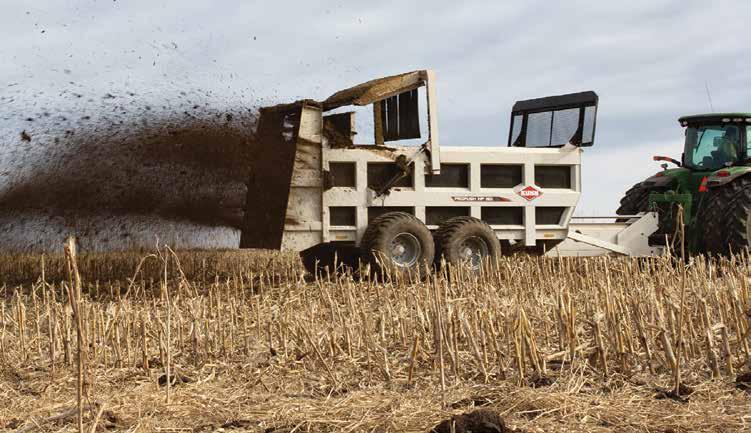








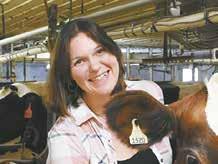
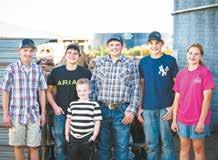


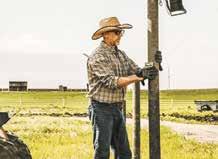

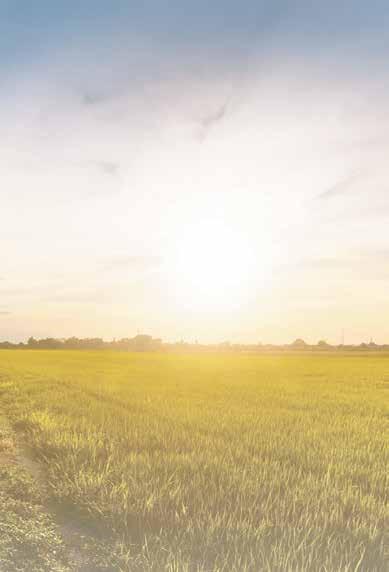





For additional stories from our other zone, log on to www.dairystar.com
















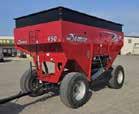

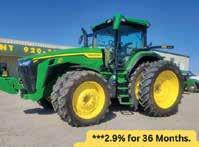











While great effort is put into preparing milk the right way to feed calves, it is important that the sanitation of milk bottles is maintained to a high standard as well.
Westwaard introduces an optional lidded bottle washer unit that also incorporates a nipple washing basin in varying sizes from 30 to 90 bottle capacity.
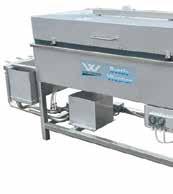

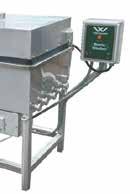

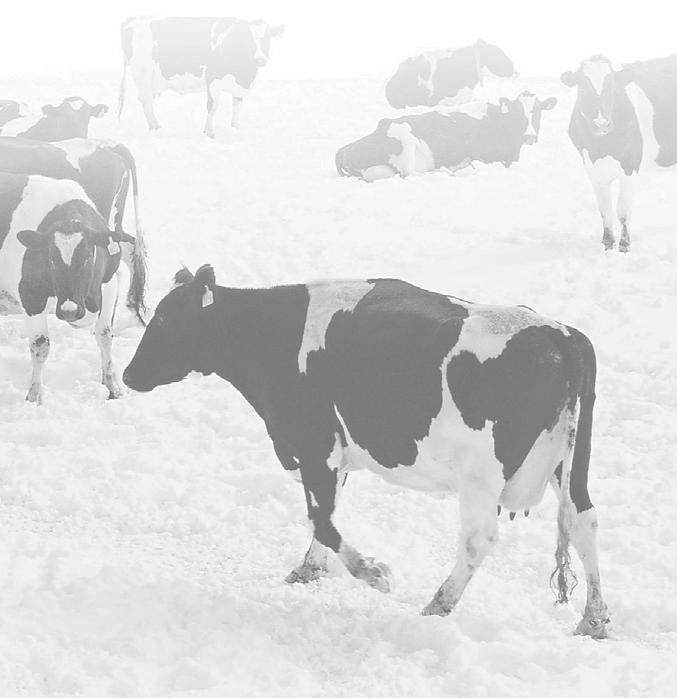

“(I had the) biggest smile on my face ever,” Henry said. “It was phenomenal. … I love having Memphis around.”
Henry lled the wagon too full getting him loaded and it tipped over. It got righted, and soon Memphis was ready to go.
“It was fun,” Tracy said. “(Memphis) didn’t even stop that time. He just went straight to the pile. He knew exactly where he was going to go, and left Mom and Dad behind.”
Memphis is a regular ride-along with Henry, Evers, his great-uncle Philip and his cousin Brady.
“Memphis is always full of questions,” Henry said. “He’s always a good time. He’s always giving you a hard time if he thinks … I’m doing something wrong or I’m not doing it the way I should be doing it. … I always look forward to Memphis coming.”
A day after Memphis helped, Evers Dairy completed the 3,000 acres of corn silage they chop for their 2,600 cows. They also farm 3,000 acres of hay ground. All feed goes back into the cows. Evers Dairy is a family operation, with about 20 Evers family members part of the dairy.
Though Memphis lives in town, he goes to Evers Dairy or to his grandparents, Jim and Deb Franke’s farm on the weekends. He has helped
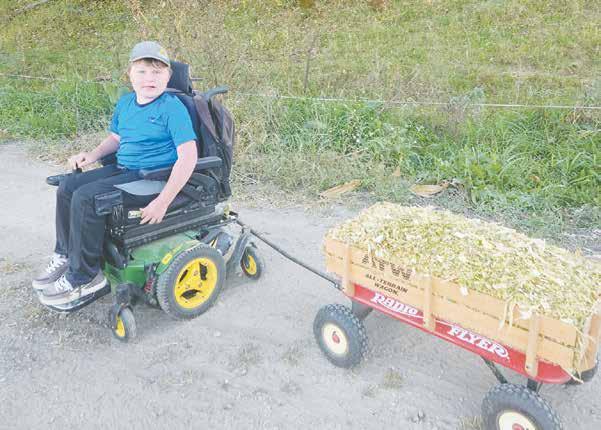
with feeding calves at Evers Dairy and has seven Simmentals at his Franke grandparent’s farm, which he shows.
At home, he has a play farm that covers the kitchen table, counters and even the garbage stand. Tracy cooks in a small corner of the available surface area. The kitchen space is easily accessible to Memphis and keeps his collection of multiple sheds, semis, choppers and other equipment out of the hands of his younger sisters, Mabel, Brooklyn and Georgia.
Tracy said Memphis told her he dreams about farming at night, then wakes up and plays farm and then gets to go on the farm.
Kevin and Tracy are thankful Evers Dairy welcomes Memphis to be part of things.
“Everybody here is so great with it,” Tracy said. “I’m very grateful that they give us the time.”
Philip regularly calls to tell them where the eld crew is working in case Memphis can come out.
“Obviously he’s got limitations,” Tracy said. “He can’t do a lot of things other kids can. … You start thinking outside the box a little bit and realize there’s no reason why he can’t do the same stuff that everybody else loves.”
sits in his John Deere 4440-themed electric wheelchair Oct. 15 at Evers Dairy near Kellogg, Minnesota. Franke wants to be a dairy farmer when he grows up.

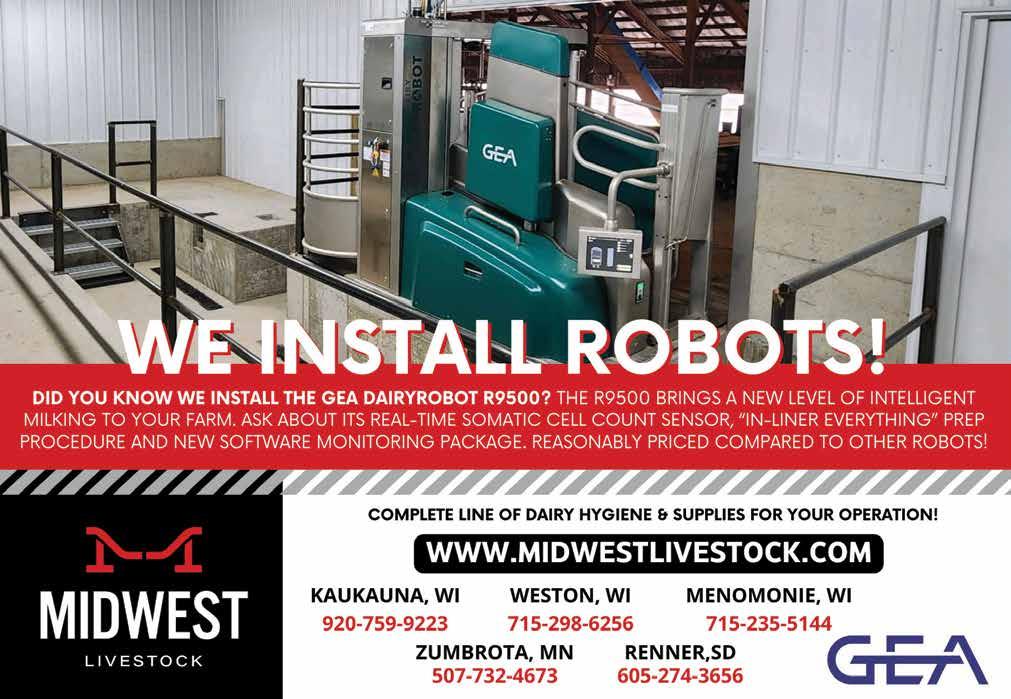
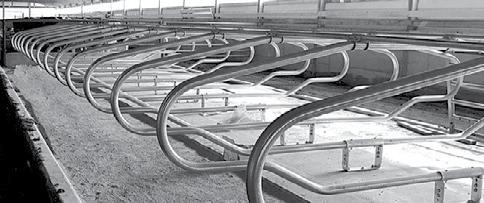


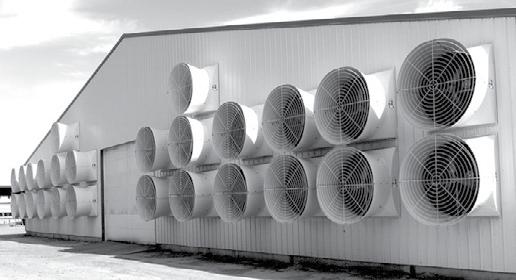


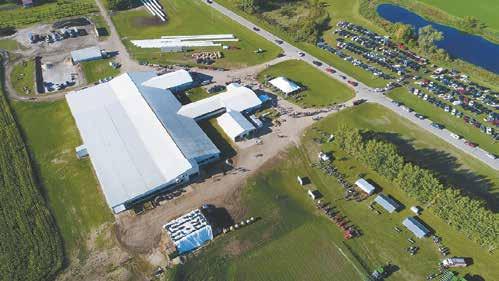
Vehicles park near Dorrich Dairy for the Pope County Breakfast on the Farm Sept. 6, 2021, near Glenwood, Minnesota. Dorrich Dairy is a 500-cow dairy, with cows housed in a 9-row freestall barn and milked by seven Lely Astronaut robots.


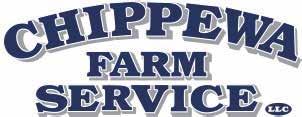


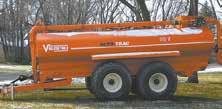


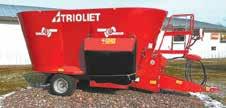






By Emily Breth emily.b@star-pub.com
GLENWOOD, Minn. — Started in 1899, the Vold farm has been transitioned through the generations by a family dedicated to farming. Dorrich Dairy Inc. — a partnership between Brad and Susanne Vold and Brad’s brother and sister-in-law, Greg and Charity — has been named the Pope County Farm Family of the Year.
Dorrich Dairy is a 500-cow dairy, with cows housed in a 9-row freestall barn and milked by seven Lely Astronaut robotic milking units. Before the robotic milking units, the Vold family milked 300 cows in a double-8 herringbone parlor.
The Vold family said they operate with ve key values: doing common things uncommonly well; leaving it better than when they got there; surrounding themselves with great people; promoting agriculture through education and doing the right thing.
“Our motto here: not just another herd,” Greg Vold said.
There are many ways the family is active in the community, mainly by helping others learn about agriculture.
“Our farm has always been heavily involved in ag education (in) one way or another, whether it is working with local community groups, doing tours or (getting) involved in different organizations within our community,” Vold said.
All members of the Vold family are active in different ways throughout the community.
“We all kind of work with different dairy promotion activities, whether it be local, on the state level, and (volunteering) and working with our different school booster groups,” Vold said. “Each one of us kind of has our own little niche.”
Vold is involved with the Pope County Farm Bureau and serves on the local housing and redevelopment authority. Charity is president of the Pope County daycare association and sits on the board of the Minnewaska Parent Teacher Organization.
Brad is a regional council representative for Land O’ Lakes Inc. Susanne is a Midwest Dairy corporate board member, is involved with the National Dairy Promotion & Research Board and serves on the Innovation Center for U.S. Dairy’s Environmental Stewardship Committee.
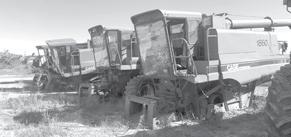


When Smith took over the farm, he and his father continued to make breeding decisions together.
“My dad was really into genetics and so am I,” Smith said. “He had a hard time stepping away from that. Instead of asking him to do that, he’s still making breeding decisions, and we’re picking bulls together.”
Lansing’s transition experience was not as positive. The transition plan for her family’s 1,200-cow farm in Iowa is now in a holding stage. She and her husband have relocated to Sunnyside, Washington, and reside on a 4,000-cow dairy where her husband is the main herdsman.
“When the transition process started, it started well,” Lansing said. “It wasn’t a negative thing the whole time.”
The farm is split 50/50 between Lansing’s dad and uncle. Lansing tried to have monthly meetings to discuss business opportunities and the state of the business but to no avail.
“That was a red ag for us,” she said. “Very difcult conversations were had. We constantly asked the state of nances of the farm but were never given those.”
The moderator asked Smith and Lansing about awkward conversations they had with family.
“The elephant in the room is that I have four sisters and one brother-inlaw actively involved in the farm,” Smith said. “Handling expectations from everybody was the awkward part.”
His younger sister is in charge of the farm’s creamery and ice cream shop, while his brother-in-law is involved on the agronomy side.
“To have to sit and talk about money is difcult or whether there are additional people involved in the farm who shouldn’t be,” Lansing said. “Those are some of the hardest conversations to have.”
The panelists shared how they worked out the next generation buying into the operation.
Ohldes’ boys grew up owning cows for FFA projects, and by the time they transitioned, each had some equity in cows. One son also started renting ground and owned several pieces of equipment. Ohlde and his wife sold a 20% interest in the business to each of their sons.
“We gured out what their equity was worth minus what the cost for them to buy in … and then they made payments,” Ohlde said. “Sweat equity is important, but in our situation, it was a little different because they had always been on the payroll. They also came in at the early ages of 22 and 24.”
Czech’s son takes a modest salary from the business.
“When I started farming, the barometer that I measured my business by was my net worth gain,” he said. “Being that my son is 50% owner of the business, his net gain is quite large.”
Czech and his son did not go into business together on the home farm. Instead, Czech provided the equity to borrow money to buy another dairy at 100% nancing.
“We started on that farm on an equal basis, and all the gain we make is split 50%,” he said. “That farm is paying its own debt off.”
While working as an employee,
Smith said he was fairly compensated.
“I always made it known that I aspired to own the dairy operation and keep it going, however, I never expected it, nor did I put my future in my dad’s hands,” Smith said.
Around 2015, Smith bought 167 acres of land, and in 2019, another 88 acres.
“I wanted to farm, but I didn’t expect them to give it to me,” he said. “I was trying to get something going on my own with the idea that if it doesn’t work out, I have something to fall back on, and if it does work out, I’ve expanded my land base.”
Smith said he had to bring value to the farm, which he did by improving somatic cell count.
“That more than paid for my salary and added to the bottom line,” he said. “If someone is going to come back, they have to pay their salary and then some while also adding value.”
Tax credits played a part in Smith’s parents structuring a buy-in.
“My dad had a million dollars’ worth of tax credits that were going to expire in 2022,” Smith said. “We needed to get this transition done otherwise he was going to owe a lot in taxes.”
Smith and his parents discussed forming a partnership and going to a corporation with shares, having Smith buy livestock and equipment and rent facilities and land.
“That was just kicking the can down the road,” Smith said. “For a few more thousand dollars, I could pay the mortgage. Yeah, that will make things tight, but in 20 years, I’ll be glad I did it.”
Lansing and her husband
purchased 30 head of cattle as an investment in her family’s dairy. However, they never reached a point of purchasing or renting land from the farm or buying shares of the business.
“It was a very tough spot,” she said. “Every day, my dream was sitting there within arm’s reach, but I never felt so far away from it. One of the hardest things I had to do was walk away.”
Ohlde started the transition process by working with his lender, an attorney and accountant. Smith’s go-to person was from Compeer Financial. Smith said he represented the farm, keeping the expectations of both Smith and his parents in check while determining what the farm could afford.
“He was that third party that took the emotion out of it and was a big help,” Smith said.
Czech said he had a great nancial advisor and banker.
“Those are two key things in any business, especially farming,” he said.
Lansing worked with an attorney, and when buying cattle, she and her husband put it under the same lender as the farm to create a relationship with them. They also brought in several transition planners, but Lansing said there was never one that both her dad and uncle liked. Lansing hopes a transition will be possible in the future.
“You want to hear that your child wants to push their way into the business,” Czech said. “That’s encouraging. The farm is an active, living thing. There needs to be a generation entering the farm and a generation exiting the farm.”




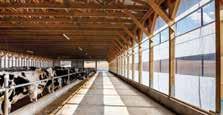
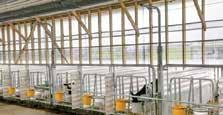














The Vold family — Roran (front, from le ), Braigh, Aidric and Dorothy; (back, from le ) Greg, Charity, Richard, Suzanne, Brad, Erik and Katy — stand together Aug. 3 during the Pope County Fair in Glenwood, Minnesota. The Vold family was named the Pope County Farm Family of the Year.
EMILY BRETH/DAIRY STAR
Brad Vold checks on the compos ng system Oct. 22 at Dorrich Dairy near Glenwood, Minnesota. The Vold family is ac ve in the community in various ways, including helping others learn about agriculture.


Richard is also involved in the Lions Club and served many years on the GENEX Cooperative board. The entire family helps with church activities and school booster groups.
“Outside of (the) local community, we always look at how to bridge that connection between those involved in the farm and those who do not have a direct connection with the
farming community,” Vold said. “We are always opening up that door, creating a connection and offering a way for others to ask questions.”
Prior to the brothers and their wives taking ownership, the farm was owned by their parents, Richard and Dorothy Vold.
“Our parents just got out of ownership a couple of years ago,” Vold said. “Our dad still helps us with the day-today activities.”
Brad’s kids — Anna, Erik and Katy — and Greg’s kids — Aidric, Roran and Braigh — are also part of the farm.
Over the years Dorrich Dairy has been an early adopter of advancements in the dairy industry. The farm has seen nearly every type of milking system from milking by hand to robots and
nearly everything in between.
For many years, the family raised hogs and chickens, but they sold them to focus on dairy.
The Volds raise their own feed on 600 acres of land.
Youngstock are raised off site but the Volds retain ownership. The bull calves are sold usually at a week old, and the heifers are transferred to the raisers around that time as well. They get the heifers back roughly 2-2.5 months before calving.
Looking to the future, the Volds said they want to preserve the land better than the way they found it.
“We want to secure a good environment for the kids if they want to stay and take over,” Vold said.
















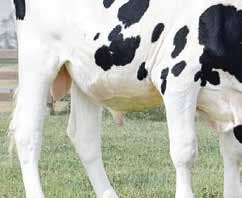































By Sarah Middendorf sarah.m@star-pub.com
MADISON, Wis. —
During the hustle and bustle of World Dairy Expo in early October, visitors paused for a seminar to learn about goals and tools to maximize income over feed cost.
“When high-producing cows are fed to their potential, the return on income over feed cost is substantially higher than cows that are fed to a lower cost strategy,” said Sarah Stocks, technical services manager at Novus International Inc.
The goal is to be able to maximize IOFC. Stocks said being able to accomplish this increases the chances for success and protability.
To calculate IOFC, the feed cost is subtracted from the total milk income.
“We are using this as a metric to evaluating protability with the feeding program,” Stocks said. “We are capturing, hopefully, an accu-
rate picture of the total value rather than just the total cost of your nutrition program.”
To know the feed cost, Stocks said farmers need to know how they are allocating it in their budget.
“When you ask producers what their homegrown feed costs are, it’s not uncommon to get, ‘Well, what did my neighbor tell you?’ (or) ‘What kind of numbers are you hearing in the industry?’” Stocks said.
There can be an opportunity to save money by managing refusals in the feed bunk.
“It’s not an income, but the difference between $500,000 and $50,000 is a pretty big number when we look at the 2,000-cow herd,” Stocks said.
There are many tools farmers can use to help maximize IOFC. These include improving production and feed components, reducing feed costs and improving feed efciency. These can be accomplished by management changes, forage changes or different feed additives.


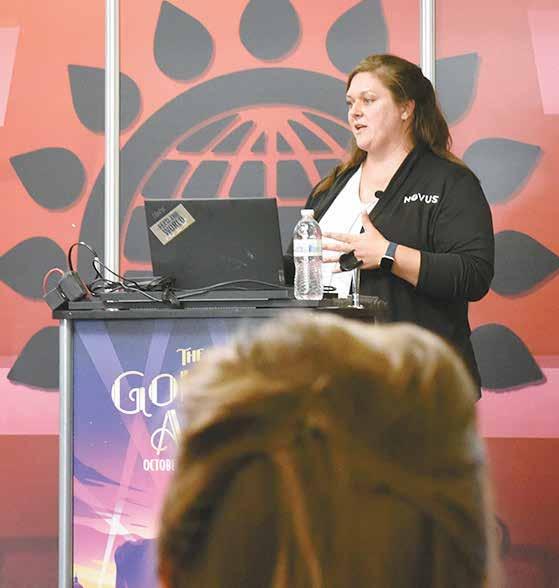
Sarah Stocks talks about maximizing income over feed cost Oct. 2 at World Dairy Expo in Madison, Wisconsin. Improving produc�on and feed components, reducing feed costs and improving feed efficiency are some tools farmers can use to help maximize IOFC.
“The more we can improve digestibility, the more economic value we have in getting to how we maximize income over feed cost,” Stocks said.
In the rumen, the total mixed ration is primarily converted into propionate, acetate and butyrate. Propionate leaves the rumen and goes to the liver, where it can be converted into glucose, which helps drive milk production. It can also be oxidized as a fuel in the liver, which gives

the animal energy. Glucose makes its way to the mammary gland and gets converted into lactose, then, ultimately, milk.
When feeding forages to cows, particle size matters for rumination.
“If we have a forage that is high in digestible ber and we chop it smaller, we will actually see that there can be a recovery on milk production,” Stocks said. “We allowed the cow to get in, eat her feed, get back, lay down and do her job.”
There are also many different additives to help improve feed efciency. Some that Stocks shared were Rumensin, Monensin, yeast, probiotics and essential oils.
“We make some really big strides when we can increase propionate production in the rumen by using some of these feed additives we have available,” Stocks said.
Doing so can increase energy balance, milk yield and milk quality at the same time.
“If we are using the cow’s energy reserves to help maximize production, we are not doing ourselves any favors when it comes to getting her pregnant down the line,” Stocks said.
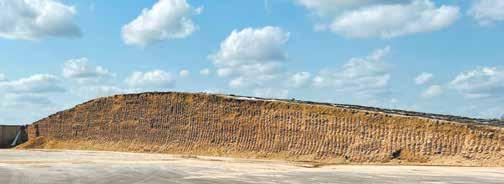
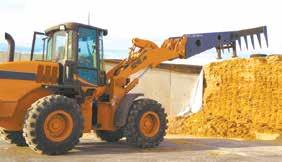


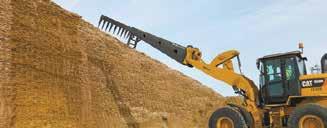
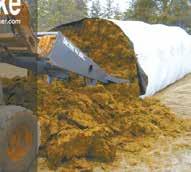





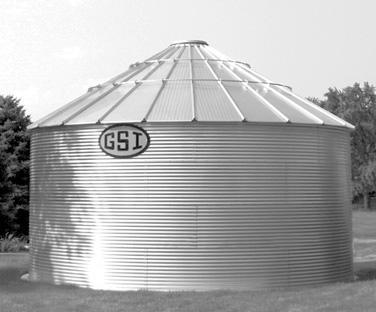


According to CoBank’s The Quarterly, 2024 will likely end up being one of the top three years in history for milk prices. Grain prices are also at a veyear low. Economist Corey Geiger said a window has opened for dairy farmers to consider locking in positive margins based on the futures market. U.S. milk production is on track to be down for two consecutive years. If that trend continues, it would be the rst time in 50 years that milk production has declined for back-toback years. Beef-on-dairy calf prices remain strong, cutting into the supply of replacement heifers.
Expansion curtailed by outside inuences
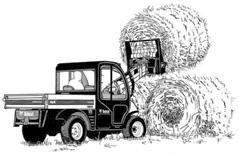

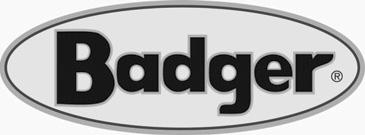








By Don Wick Columnist Ag Insider

With avian inuenza expanding in California, milk production may eventually be impacted. Shawn Hackett of Hackett Financial Advisors said dairy buyers are front-end loading their purchases because they are concerned about the future milk supply. “However, USDA, as of the last production report, said that production grew slightly so there’s a disconnect between the fear in the market from avian u and what USDA is reporting.” Hackett said it will also be difcult to grow the dairy industry due to the lack of dairy heifers. “What I see is probably one of the tightest, greatest shortages of dairy heifers we’ve ever seen, meaning that even if the dairyman decides he wants to go out and expand it doesn’t mean he can.”
Lame-duck session may deliver for agriculture
Once the votes are counted and the election is over, lawmakers will return to Washington, D.C., for a lame-duck session. The plate will be full for Congress, but Pro Farmer consultant Jim Wiesemeyer expects help to be on the way for farmers and ranchers. “We’re going to get a hurricane disaster bill and maybe even a farm nancial transition payment,” Wiesemeyer told Red River Farm Network. “You’ll see nancial assistance for the ag sector because it is hurting right now.” According to Wiesemeyer, the odds are rising for passage of a new farm bill this year. “Either Trump or Harris wants to have as much done in the lame-duck as it possibly can to hit the ground running in their new administration.”
Farm bill, nancial assistance on wish list
During a tour of Arkansas farms, Senate Agriculture Committee Ranking Member John Boozman said two things need to happen in the lame-duck session after the election. No. 1, Boozman said a new farm bill needs to be passed. Secondly, Boozman said farmers need an immediate nancial assistance package.
Farm bill optimism fades
Iowa Senator Chuck Grassley does not expect a new farm bill to pass during the lame-duck session. During an event in Des Moines, Grassley said Congress will only be in session for two weeks in November and three weeks in December and he doesn’t think there is enough time to complete the farm bill.
Dairy needs a strong safety net
While the year has been generally good for dairy producers, Associated Milk Producers Incorporated Chairman Dave Peterson stresses the importance of a farm bill, especially for the Dairy Margin Coverage plan. “We don’t want to forget that because of the year we’ve had. We might as well face it, two years ago, it kept a lot of farms in business.”
H-2A in the courts
Ag groups, including the American Farm Bureau Federation and National Potato Council, have led a lawsuit against the labor department and its new H-2A rule. The rule, which was imposed in April, prevents employers from retaliating against H-2A visa holders who try to form or join a union. A court ruled this provision was unconstitutional in August, but did not issue a national injunction.
National Cooperative Bank co-op 100 released CHS Inc. again leads the list of the 100 top cooperatives in the country. CHS had 2023 revenues of $45.6 billion. The National Cooperative Bank releases the Co-op 100 each year. Numerous dairy cooperatives are on the list, including Dairy Farmers of America at No. 2 with 2023 revenue of $21.7 billion. Land O’Lakes is ranked third. Illinois-based Prairie Farms Dairy is ranked 14th and California Dairies Inc. is 15th. The list also includes New Mexico-based Select Milk Producers Inc. at 18, Washington-based Darigold at 26, Foremost Farms at 37, Associated Milk Producers Incorporated at 43, Michigan Milk Producers Association at 58, Tillamook Creamery at 62, Maryland and Virginia Milk Producers Association at 64, Organic Valley at 65, Agri-Mark Inc./Cabot Creamery at 70, National Farmers at 83, First District Association at 86 and Bongard’s Creameries at 96.
Old Home Foods, backed in Bloomington, Minnesota, is suing Kemp Foods over a breach of contract. Kemps, which is headquartered in St. Louis Park, plans to stop making Old Home products at its LeMars, Iowa, plant at the beginning of 2025. A co-packing agreement between the two companies was in place until May 31, 2025. Old Home Foods produces cottage cheese, sour cream and chip dips. In the lawsuit led in federal court, Old Home Foods claims an early end of the deal would force it out of business.
Food safety task force appointed
Minnesota Governor Tim Walz has appointed the members of the state food safety and defense task force. The appointees include Wholesale Produce Supply Vice President of Food Safety Steven Foster, Minnesota Farm Bureau Foundation Director Ruth Meirick, Home Chef Vice President of Food Safety Stanley Osuagwu, Association of Food and Drug Ofcials Research Director Carrie Rigdon, Hennepin County Supervising Environmentalist Julia Selleys and Buddy’s Kitchen Vice President of Food Safety Thomas Webber
Harden, Freeman inducted into 4-H Hall of Fame
Fifteen individuals were inducted into the National 4-H Hall of Fame this week. The honorees include Krysta Harden. Harden was the U.S. Department of Agriculture deputy secretary from 2013 to 2016 and now serves as the president and CEO of the U.S. Dairy Export Council. Freeman served as the Minnesota State 4-H director, retiring in 2018.
Nolan passes
Former Minnesota Congressman Rick Nolan, 80, has died. Nolan served in the House from 1975 to 1981 and again from 2013 to 2019. The 32-year gap between terms in Congress is the second-longest in history. The Democratic Farmer Labor party member was a member of the House Agriculture Committee. Nolan also served as president of the U.S. Export Corporation and the Minnesota World Trade Center.
Trivia challenge
Dairy Farmers of America is the largest dairy cooperative in the United States. That answers our last trivia question. For this week’s trivia, what blue cheese is named after a village in Italy where it was rst produced? We’ll have the answer in our next edition of the Dairy Star.
Don Wick is owner/broadcaster for the Red River Farm Network of Grand Forks, North Dakota. Wick has been recognized as the National Farm Broadcaster of the Year and served as president of the National Association of Farm Broadcasting. Don and his wife, Kolleen, have two sons, Tony and Sam, and ve grandchildren, Aiden, Piper, Adrienne, Aurora and Sterling.
Vilsack discusses opportunities, challenges in industry
By Stacey Smart stacey.s@dairystar.com
Editor’s Note: This article is part one of a two-part series covering the Global Dairy Summit that took place at this year’s World Dairy Expo.
MADISON, Wis. — Dairy enthusiasts from across the world gathered for the industry’s largest show of the year Oct. 1-4 in Madison.

World Dairy Expo attracted political gures as well, including Secretary of Agriculture Tom Vilsack.
Vilsack visited Expo grounds Oct. 4 to provide closing remarks at the Global Dairy Summit — an event hosted by the Wisconsin Department of Agriculture, Trade and Consumer Protection. The purpose of
the summit was to offer insight into the dairy economy, provide an industry outlook and highlight potential marketing opportunities.
“I know two things about farmers,” Vilsack said. “You love what you do, and you want the opportunity to pass your operation onto the next generation. At (the U.S. Department of Agriculture), we’re committed to making that happen. I appreciate everything dairy farmers do for this country.”
Vilsack expressed optimism about the all-milk price, which stands at $23.05 and is forecasted to reach $23.45 by 2025.
“That will make it the third highest milk price ever,” he said.
Furthermore, the milk-to-feed price ratio is 1.67, which Vilsack said is the best in over a decade.
Cheese exports are also the highest they have been in 10 years. Highprotein whey exports are also going up, and Vilsack said he expects this year to be the third highest export year for dairy products.
“The future of exports for dairy is bright,” he said. “(U.S. Dairy Export Council) is looking beyond our traditional trading partners,
Turn to GLOBAL SUMMIT | Page 12
“It gives me the information I need when I’m looking for it.”
long have you been testing with
What tests do you use and what do you like about those tests? We use the somatic cell count and pregnancy check test. I like the SCC test to gauge the cows history on SCC. We’ve been using the SCC test since the 1980’s. I like the pregnancy check test to get early results. It’s also less stress on the cows because you don’t have to catch and palpate the cows.
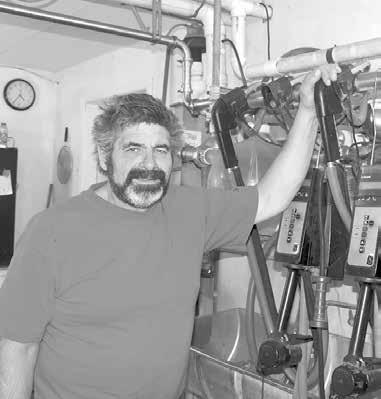
Which is your favorite and why? The SCC. We rank the cows according to SCC then we take care of the issues.
How does testing with DHIA bene t your dairy operation? It gives me the information I need when I’m looking for it.
Tell us about your farm. Our dairy cows are on a rented farm. We farm no land and purchase all of our feed. We are unconventional the way we feed our cows. We use balage, and beet pulp along with ground corn and a custom protein mix. We feed with a TMR in a free stall barn.






Ready-to-use winter teat dip with 55% glycerin
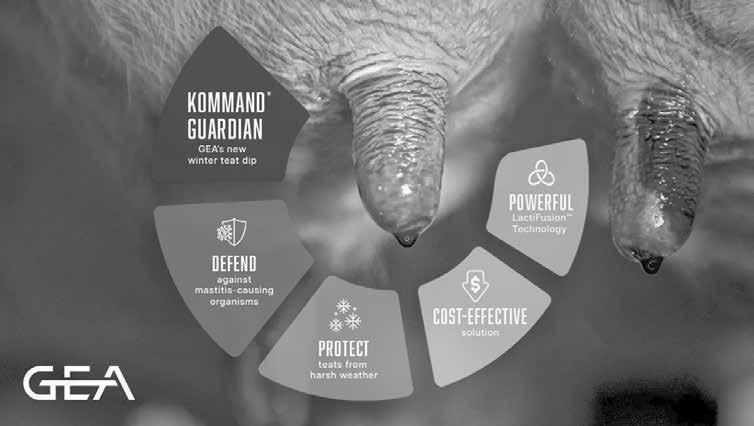
Maintain your herd’s teat health through harsh weather conditions. Kommand Guardian contains GEA’s exclusive LactiFusion™ technology, providing excellent protection against mastitis causing organisms.
With proper housing management, Kommand Guardian will help reduce teat chapping and lessen the chance of frostbite due to the inclusion of 55% glycerin, keeping your herd healthy throughout the toughest winter conditions.
Product is easy to apply and provides a bright blue color for visible confirmation that teats have been properly dipped and protected from the elements.
All GEA hygiene products have a 100% customer satisfaction guarantee.

and I think we’re going to see less reliance on some of the traditional export markets with an array of opportunities for high value-added products going into places like Vietnam and the Philippines.”
Kenya and other African nations and Latin America are places where tariffs are coming down and opportunities are expanding, Vilsack said.
Vilsack made a point of addressing a comment made by former U.S. Secretary of Agriculture Sonny Perdue during a visit to Expo in 2019, when he spoke about the status of small and mid-sized dairy operations.
“At the time, he was very truthful and challenged all of us,” Vilsack said. “Perdue said, ‘The way this is set up, unfortunately you have to get big or oftentimes you have to get out.’ We took this as a challenge and asked, ‘Is there a way we can create a different model?’”
Vilsack made the case for smalltown rural America and its connection to agriculture.
“Small and mid-size operations are not only important to agriculture, they’re really important to rural communities,” Vilsack said. “If you lose farms, you lose the farm family. And when you lose the farm family, you lose students in schools, and schools have to merge. Businesses that surround those people close, and that impacts the economies of those small towns. You undercut an important part and capacity of America.”
Creating opportunities to prot small and mid-size operations is the goal Vilsack said. He said this cannot be in the form of support programs, but rather, what is needed is a new and
creative model in which farm families can have more than one source of income on their operation. He said the USDA has attempted to create income sources beyond milk.
“Can we pay farmers not only for what they produce but also how they produce it?” Vilsack said. “We’ve invested and will continue to invest in resources under our climate-smart agriculture commodity initiative which started with the dairy industry.”
The idea behind Partnerships for Climate-Smart Commodities is that farmers should be paid to participate in climate-smart agricultural activities and be rewarded for that with a market premium. The USDA has such projects with Edge Dairy Farmer Cooperative and Organic Valley.
“They are helping pay farmers to embrace climate-smart agriculture and in turn create opportunities for that prot margin to be a little bit wider,” Vilsack said.
More than 100 contracts have been signed involving all 50 states and every major livestock and commodity produced in the U.S., helping to incentivize 200 climate-smart practices.
“We’re measuring and monitoring the environmental results of those practices which has set up the opportunity for those farmers to benet from ecosystem markets,” Vilsack said.
The USDA has invested resources under its Rural Energy for America Program to help producers create an energy source through renewable natural gas projects. Utilizing a digester or other strategies to convert manure into something more valuable is the


premise behind this program.
Instead of one income source, farm families could now have several income sources under this new model, Vilsack said.
Through the Natural Resources Conservation Service, the USDA has provided $2.5 billion to the industry to help smaller and midsize producers adopt conservation practices as part of the Environmental Quality Incentives Program. EQIP contracts currently number 3,700.
There is also an $85 million investment to expand opportunities in the organic market.
In addition, the USDA is encouraging the development of local and regional food systems, which Vilsack said is a better deal for farmers. When selling a product commercially, farmers get anywhere from 15-20 cents of that food dollar. But when they sell directly to the consumer, such as at a farmers’ market or to a school, the farmer can potentially generate 50%75% of that food dollar, Vilsack said.
“We’re investing in expanding these systems through a producer value-added grant program and local food purchasing agreements,” he said. “We’re directing a portion of that money be spent with local and regional food opportunities so that small and medium-sized operations get a bigger bang for the buck.”
An investment of $1.7 billion across 50 states was recently announced for the program.
The USDA has been heavily involved in procurement of dairy products, Vilsack said, and is purchasing food for schools and the Special Supplemental Nutrition Program for


Women, Infants and Children. From 2021-24, they invested about $12.5 billion in these programs to purchase dairy products.
Vilsack also spoke about the farm bill. He said there is a focus and desire on the part of some to increase reference prices for producers. These prices impact about 22 commodities out of over 100 grown and raised in the U.S.
“Within those commodities are about half a dozen that would actually benet what’s gone through the ag house committee,” Vilsack said.
This has not been put up for a vote because it probably would have failed, he said.
“When you look at the farm bill, there isn’t enough money in the way in which the bill was crafted to pay for all the increases,” Vilsack said. “There’s a decit, and when you have a decit, you lose votes.”
The secretary stressed urgency in getting a new farm bill passed.
“If it doesn’t get done now and rolls past Jan. 1, you have major challenges because you have to start all over again with a new administration and a new Congress,” Vilsack said. “The goal is to try and get this done.”
Vilsack concluded by again speaking on the USDA’s efforts to save the family farm.
“We are betting on and believe in this industry and the importance of this industry,” Vilsack said. “We believe if we can continue to do this over time, we begin the process of reversing the decline of small and midsize dairy operations in this country.”
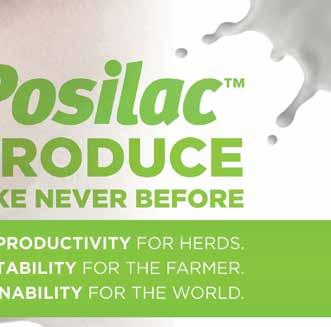

There are many different things to measure or take into consideration — production, components, intake, rumen fermentation, timeframe for response, cost to implement, labor, milk price, management and more.
An example of a management change could be creating different feeding groups with cows.
“As we move from a one-group to a two-group to a three-group feeding strategy, each of those income over feed costs increases,” Stocks said.
Going from a high group to a low group, the cows made a higher IOFC than leaving them on the same diet, Stocks said.
Being able to lower some of the higher-expense ingredients and either maintain production or not have a

large hit gives farmers an opportunity to maximize IOFC.
Like most things, there are challenges associated with it. Cost to implement, labor costs, inability to split animals into separate groups or being able to manage just one group are some of the challenges that may be faced.
It is important to work with professionals to make sure they are paying attention to the numbers to make these decisions work on each farm, Stocks said.
“If we can optimize dry matter intake and maximize milk production … we can certainly make a difference on our income over feed cost,” Stocks said.




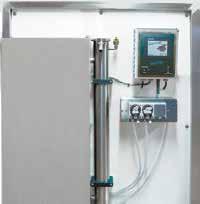


“Since





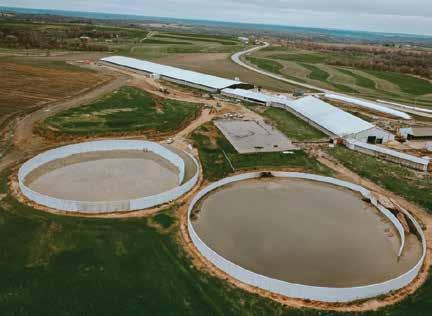



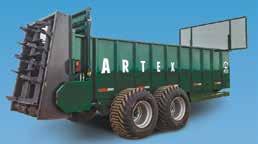
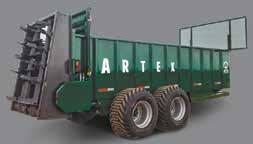

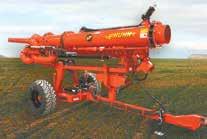
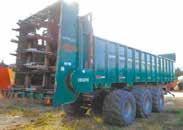




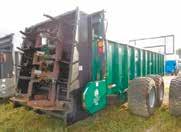
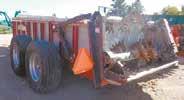









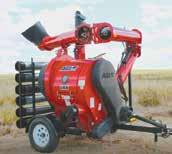
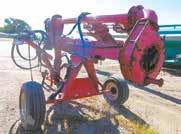
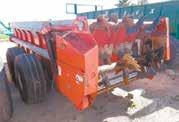

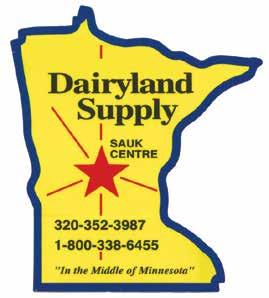


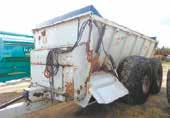



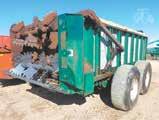

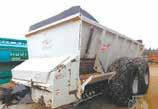



Garrett Luthens
Skyview Dairy
Hutchinson, Minnesota
McLeod County
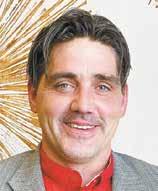
What issues are facing dairy farmers in your area and across the country? One-sizets-all social policies and mandates enacted and passed state and nationwide that might work for urban taxpayers but not for rural taxpayers and farmers. For example, the Affordable Care Act has created for sole-proprietors (farmers) the burden of nding off-the-farm jobs to be able to receive health care that they can afford, but they still have to pay into that tax program. There is a disconnect between the local Minnesota Pollution Control Agency, the Natural Resources Conservation Service, the Soil and Water Conservation District and the Farm Service Agency trying to help their farmers with the people passing legislation at the Capitol. Our local ofces have a lack of resources (manpower, funding, time of implementation of new legislation).
When voting, what qualities do you appreciate in a candidate? When looking at candidates, I vote more along the lines of how their ideas will affect my business and community versus social issues.
What agriculture-related legislation would you like to see overturned? The agriculture-related legislation I would like to see overturned would be the concentrated animal feeding operation regulations. I believe this legislation pits different size livestock farmers against each other. We should all contribute and be held equally responsible for the success and failures of our precious resources.
In your lifetime, which president do you feel has beneted the country most? In my lifetime, I believe no president has or should have the ability to create the most benet or harm to the country. I believe that what can or has created a better United States is when all three powers (House, Senate and president) are equally representing different party lines. Even though you may vote along one party line, we all need to remember that roughly 50% of the country thinks differently than you. I believe the best way for our country to thrive is when these parts of government work together to pass legislation that the majority of us can most agree with.
Tell us about your farm. We’re a second-generation family-owned dairy operation that is trying to ensure it will be here and successful for the third generation. We identify as stewards of God’s creation committed to forward progress.
Dan Glessing Waverly, Minnesota Wright County
75 cows
What issues are facing dairy farmers in your area and across the country? Market access. We are so tight on processing it is hard to nd a new market. A demand for the milk that we are producing leads to protability issues.

When voting, what qualities do you appreciate in a candidate? A candidate who is genuine and honest. Not someone who is telling voters what they want to hear.
What agriculture-related legislation would you like to see overturned? There are several. Waters of the United States creates some challenges especially now with Minnesota’s public water inventory being on the map or not. It’s not really a law, but the Environmental Protection Agency being decient by environmental groups over the Endangered Species Act, which is going to lead to a whole lot of challenges for a lot of farmers. Whether it’s products for row crops or insecticides.
In your lifetime, which president do you feel has beneted the country most? There are pros and cons to every president that has held the position. We just have to work to overcome areas of improvement and continue what has been good during each presidential term.
Tell us about your farm. My wife, Seena, our kids, my stepmother and my second cousin are all involved in the dairy operation. We raise corn, soybeans and alfalfa. We have half of our cows in a tiestall barn and half in a freestall barn, but they are milked in the tiestall barn. We ship our milk to Associated Milk Producers Inc.
Mike Orbeck St. Martin, Minnesota Stearns County 90 cows

What issues are facing dairy farmers in your area and across the country? The issue we have today is volatile milk prices. This year has been good, but last year was rough. We also need the farm program to be nished because of the uncertainty about the future. They need to get that done.
When voting, what qualities do you appreciate in a candidate? One that is honest and actually has a plan. It shouldn’t be all about them; it should be all about us. Also, a candidate who listens and shows interest in where their food comes from.
What agriculture-related legislation would you like to see overturned? Nothing in particular comes to mind. But some legislation could be made better. Some ideas sound good on paper but don’t work like they should.
In your lifetime, which president do you feel has beneted the country most? There are two who come to mind. (Ronald) Reagan did a lot internationally; he worked well with other countries and opened a lot of avenues for farmers. (Barak) Obama did a lot for social issues.
Tell us about your farm. We milk 90 cows in a tiestall barn. It is operated by my two brothers, Kevin and Robert, my mom, Gladys, and me. Two nephews, Jack and Sam, and my sister, Betty, come sometimes to help, along with a niece. We run 700 acres of corn, alfalfa, rye and soybeans. We raise all our own replacements and ship our milk to Land O’Lakes Inc. I am the third generation, and, next year, our farm will be a century farm.




Fran
Miron
Hugo, Minnesota Washington County 150 cows

What issues are facing dairy farmers in your area and across the country? Milk price stability that provides a respectable return on investment and labor is the biggest issue facing dairy farmers and probably has been the major issue in my 49-year career in this industry. We are currently experiencing good prices in milk, cull cows and calves. However, those of us who report to the cows each day know that these highs never last and that the low periods always last much longer. A revamping of our pricing system is long overdue and the risk management programs for dairy are not adequate. A sound farm bill could help address some of these issues for the dairy industry. The low commodity prices for corn and soybeans at this time may push overproduction and put pressure on milk prices. High input costs related to land, machinery replacement, repairs, interest rates, liability and causality insurance all eat away at protability. Labor availability can be problematic and for those of us relying on family labor, that leaves little time for time away from the farm. Continued focus on developing markets for the milk we produce is going to help in creating long-term stability as well. Mental health certainly is a signicant societal issue and dairy farmers aren't exempt. Our support system is diminishing as dairy farmers have exited the profession and our young people look elsewhere for careers. We only have four dairies remaining in Washington County, which also impacts service availability. Even in the face of all these issues I remain proud of our dairy families, love the vocation I chose and am excited for my sons and their families as they continue this commitment to the livestock industry.
When voting, what qualities do you appreciate in a candidate? I have been involved in local government for over 30 years and have been on the ballot 15 times. When I vote, I look for candidates who are accountable, accessible and willing to listen. I look for sincerity and candidates with a strong value system and a
Dave and Ann Buck Goodhue, Minnesota Goodhue County 950 cows

What issues are facing dairy farmers in your area and across the country? A lack of processing capacity creates a lack of competition between milk buyers and prevents new entrants from coming on board and current producers from expanding. However, I think ination is the biggest problem whether it’s equipment, repairs, buildings, land or personal expenditures. I wish the government was as concerned about ination as they are about a recession. In a recession you might have unemployment go up 4% and the rest of the people doing OK whereas with ination nearly everyone feels like they are falling behind. Ination continually widens the spread between the haves and the have-nots.
servant's heart. More importantly than ever we need people who can collaborate, work together and get things done for the people they serve.
What agriculture-related legislation would you like to see overturned? Unfortunately, the legislature passed a very vague denition of what is "public water" in this state. I would like to revert back to its original denition to establish clarity for landowners and farmers. Our farm abuts Rice Lake, which is classied as a public water. We have a Judicial Ditch (JD 2) which provides drainage for our farm. My wife and I spent seven years and a signicant amount of money in court ghting for our drainage rights against the watershed and the Minnesota Department of Natural Resources. Fortunately, we were successful in our legal challenge. This vague denition will only exasperate the potential loss of farmers' land rights.
In your lifetime, which president do you feel has beneted the country most? In my voting lifetime, there are two presidents I would call to attention. Jimmy Carter was one, for his strong principles and moral stance and for championing human rights. Ironically, as a farmer, he failed in agriculture policy creating a faltering economy and ination which raised havoc within agriculture. Ronald Reagan defeated Carter and, in my opinion, probably beneted the country most. Reagan's tax policies and his public outreach to gain support for his policies led to economic recovery. Reagan's efforts to reduce nuclear arms ended the Cold War, making a strong contribution to the level of world peace at that time. He also placed the rst woman on the Supreme Court, Sandra Day O'Connor. Both presidents were blessed with longevity.
Tell us about your farm. Mary Ann and I have six adult children, all married, living in Hugo and Forest Lake and 15 grandchildren, which represent the sixth generation to live and work on the farm. Four of our kids served as state FFA ofcers and our two daughters and our daughter-in-law, Kristy, served as Princess Kays of the Milky Way. Four of our children are teachers, and Paul and Andrew farm full time with us. We milk 150 cows, housed in a freestall barn, and raise our own youngstock. Our farm consists of a little over 700 acres of owned and rented land on which we raise hay, corn, soybeans and small grains. We ship our milk to the Ellsworth Cooperative Creamery and have since 1978. Mary Ann is constantly watching over grandchildren, maintaining the gardens and helping wherever needed. In addition to farming, I also serve as a Washington County commissioner.
When voting, what qualities do you appreciate in a candidate? I like candidates that say what they think and use logic and facts to back up their stance on issues. I will not vote for candidates that will say or promise you everything just to get your vote.
What agriculture-related legislation would you like to see overturned? First, they should pass a farm bill to replace the existing one that would update production bases and increase the margin from $9.50 which has eroded from ination. Second, I don’t necessarily want wetland rules overturned but they could inject a little common sense into them.
In your lifetime, which president do you feel has beneted the country most? In the late seventies we had ination at 14%, the Iran hostage crisis, long lines at gas stations and a general malaise in the country. President Reagan’s optimistic can-do attitude rubbed off on the country and I think things got better.
Tell us about your farm. Dave, my wife, Ann, and sons, Chris and DJ, are involved in everyday operations with our son, Taylor, helping out when he can. We feed out our beef cross steers which Chris manages, and DJ has a chopping and manure pumping business. We market our milk through First District Association.
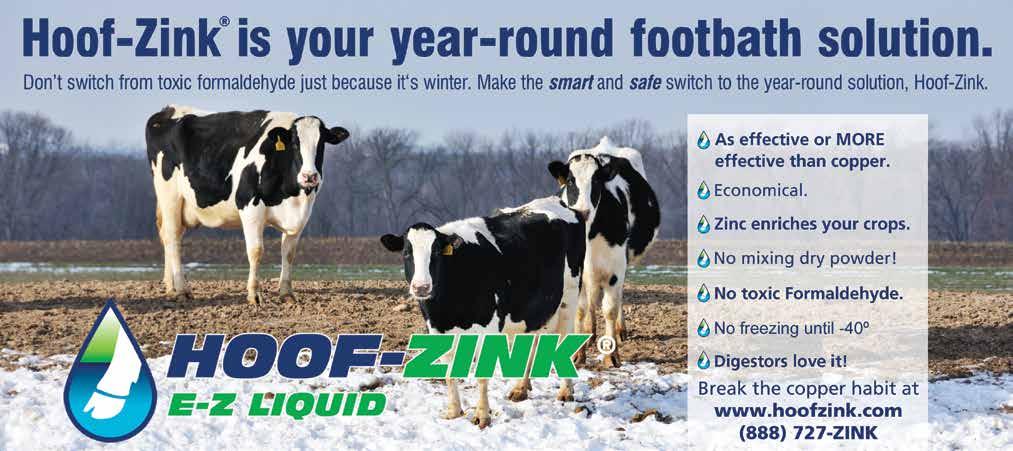


















How many times a day do you milk, and what is your current herd average, butterfat and protein? We milk twice a day. Our current average is 28,000 pounds of milk with tests of 4.2% fat and 3.2% protein.
Describe your housing and milking facility. Our cows are split into two groups — high production and low production. They are milked in a tie tall barn but housed in tie stalls and free stalls. They spend half of each day in each.
Who is part of your farm team, and what are their roles? My wife, Jenny, and I make up the farm team. Jenny does the majority of the feeding and calf care, while I do the milking and the remaining animal care. We both do eldwork as needed. I also watch for heats and take care of the breeding program.
What is your herd health program? The vaccinations include Bovilis Nasalgen 3-PMH, Bovi-Shield and Vira Shield. The pregnancy checks are done with Dairy Herd Improvement Association milk samples at 28 days
and 120 days, so vet visits are as needed only.
What does your dry cow and transition program consist of? The cows are dry for 60 days and treated with ToMORROW dry tubes and a teat sealant. They are housed at the end of the freestall barn on a bed pack of corn stocks. The ration includes grass hay, corn silage, grain, protein and mineral mix. Cows enter the high group one day after calving.
What is the composition of your ration, and how has that changed in recent years? Our ration includes haylage, corn silage, high moisture corn, ear corn, protein and mineral mix. We make small changes based on dry matter. Otherwise, we keep the ratios the same.
Tell us about the forages you plant and detail your harvest strategies. Alfalfa is cut every 28 days and chopped at 60%-65% moisture. It is stored in 16-by72-foot silo or a 9-by-150foot bags. We chop our corn silage at 64-65% moisture and store it in a 20-by-80foot silo and 9-by-150-foot
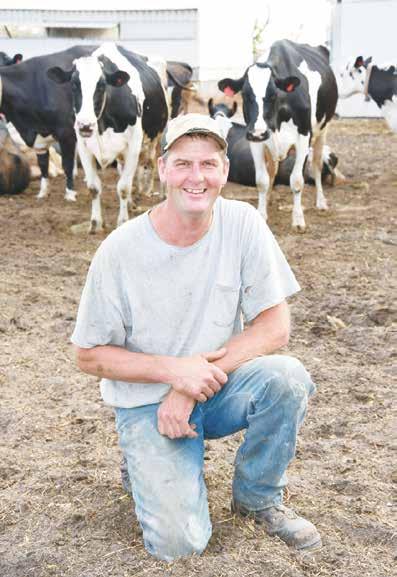

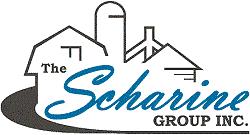
bags. The high moisture corn is stored in a 14- by 65-foot silo. We also plant forage barley and fall seeded oats for young stock, which is stored in 9- by 150-foot bags.
What is your average somatic cell count and how does that affect your production? Somatic cell count has always been a priority. Our average SCC is 125,000150,000. We do use a quarter milker on high cows. The sawdust is big for us. Nothing dries a stall as fast as sawdust.
What change has created the biggest improvement in your herd average? In 2004-2005 we switched to mattresses, long day lighting and sawdust. We saw an instant rise in production. All of our stalls have mattresses bedded with sawdust.
What technology do you use to monitor your herd? We have been using DHIA since 1997.
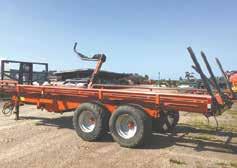
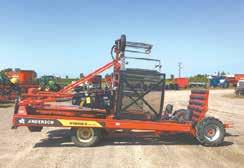

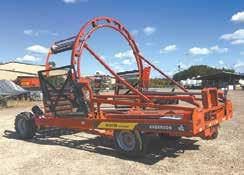















































































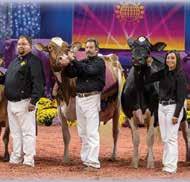
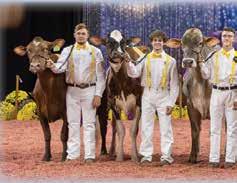


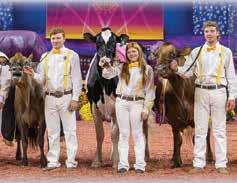











































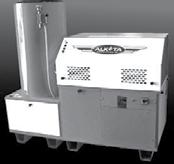


































Thank you for over 25 years of shared commitment to the amazing dairy cow and over 15 years as unanimous choice of champions at the World Dairy Expo. Want your fresh cows to get their best start? We have what you need, with tools that fit any milking setup and herd management environment. Whether at the show preparing your best cow for the ring, or at home preparing large groups of fresh cows to get all the way ready, fast, for a successful lactation... her comfort is our passion, helping reach their potential since 1998!

The sun lightens the Hemmesch farmyard Oct. 21 near Melrose, Minnesota. The Hemmesches milk their 100 cows in a e stall barn. They are housed in either a e stall or free stall barn.

What is your breeding program, and what role does genetics play in your production level? We breed with Genex. The bulls are selected for select traits — net merit, feet and legs, and stature. Now we are breeding for smaller cows, since we are getting too big. Once we get what we want then they are mated off of their pedigree.
List three management strategies that have helped you attain your production and component level.
Genetics, proper forage moisture and particle size, and balancing amino acids and fats.
Tell us about your farm and your plans for the dairy in the next year. We purchased our farm in 1997. We are currently milking 100 cows in 40 stalls. We milk with six units and switch 2.5 times. We usually make some kind of improvement to be more efcient, but do not have anything planned at this point.
MARK KLAPHAKE/DAIRY STAR
Cows eat at the bunk Oct. 21 at Hemmesch dairy near Melrose, Minnesota. The Hemmesches said proper forage moisture and par cle size are important on their dairy. Their ra on includes haylage, corn silage, high moisture corn, ear corn, protein and a mineral mix.

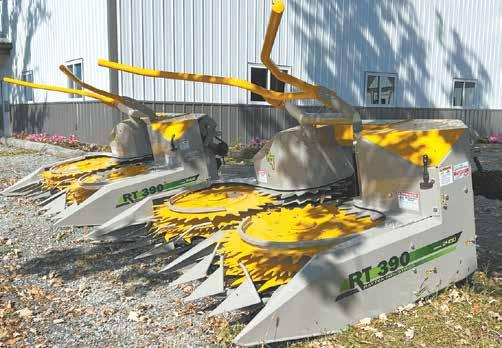
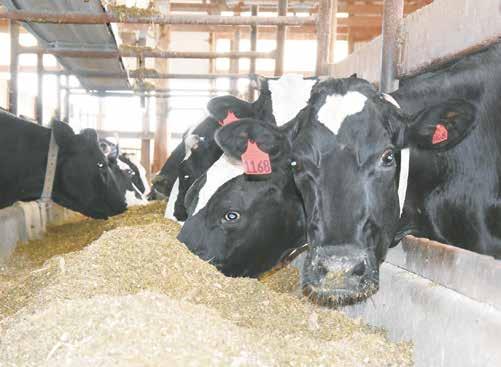





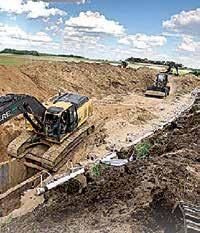



























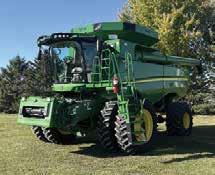




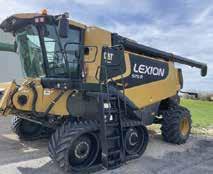













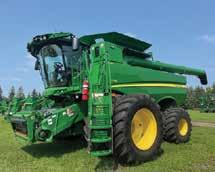



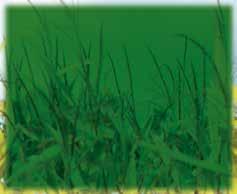


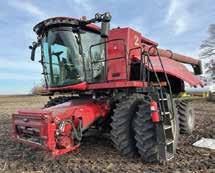


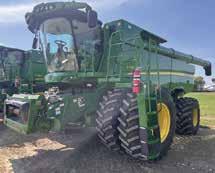



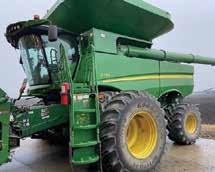


JD 9R 640 2023, 424 hrs., #580725 ..............................................
JD 9R 640 2023, 535 hrs., #579810 ..............................................
JD 9R 640 2023, 550 hrs.,














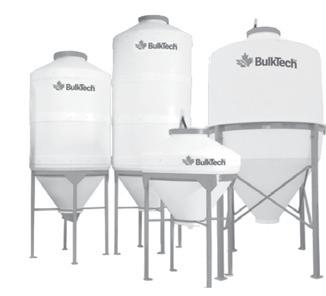

Contact one of the following dealers to learn more:
IOWA
Prairie Land Ag Supply Inc.
Rock Valley, IA 712-476-9290
United Dairy Systems, Inc.
West Union, IA 563-422-5355
Monticello, IA 319-465-5931
WISCONSIN
Advanced Dairy Spring Valley, WI
715-772-3201
Bob’s Dairy Supply Dorchester, WI
715-654-5252
Ederer Dairy Supply Plain, WI
608-546-3713
DeLaval Dairy Service Kaukauna, WI
866-335-2825
Joe’s Refrigeration Inc. Withee, WI 715-229-2321
Mlsna Dairy Supply Inc. Cashton, WI 608-654-5106
Professional Dairy Services Arlington, WI 608-635-0268
Redeker Dairy Equipment Brandon, WI 920-346-5579
The Scharine Group Inc. Whitewater, WI
800 472-2880 Mt Horeb, WI 800-872-3470
MINNESOTA & SOUTH
DAKOTA
Farm Systems
Melrose, MN 320-256-3276 Brookings, SD 800-636-5581
Advanced Dairy Mora, MN
320-679-1029 Pierz, MN
320-468-2494
St. Charles, MN
507-932-4288 Wadena, MN 218-632-5416

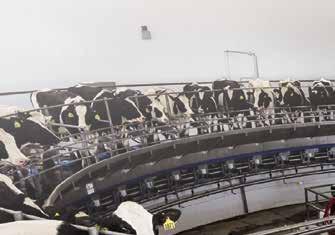








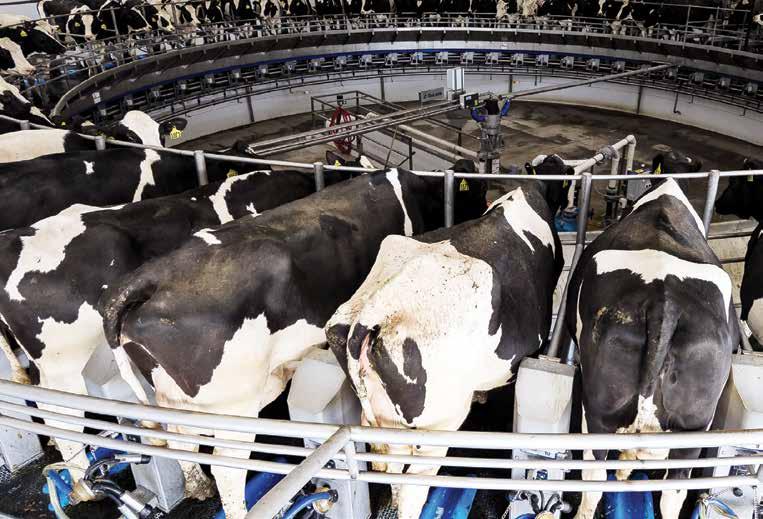




By
Tiffany Klaphake
tiffany.k@dairystar.com
LAKE HENRY, Minn.
— When Morgan Holker graduated from high school, she never thought she would milk cows again. Today she is not just milking cows but owns a herd as well.
Holker is milking 55 cows in a tiestall barn just south of Lake Henry, while her dad, Duane, milks 80 cows in a step-up parlor just north of Lake Henry. Both milk in rented facilities.
“My dad was milking here, but his knees were getting bad so we swapped places,” Morgan said. “I like the tie stalls better because I can watch my cows closer.”
The Holkers each have their own cows. But when the switch was made, the milking cows stayed put and just Morgan and Duane traded places and now milk each other’s cows.
“It was so nice for me to not have to squat down to milk cows anymore,” Duane said. “It’s nice that we each

Morgan Holker stands next to one of her cows Oct. 16 at her farm near Lake Henry, Minnesota. Holker milks 55 cows in a rented estall barn.
have our own farm but work together with the heifers.”
Morgan’s cows are mostly Holstein with a few Red & White Holsteins and some Jersey crossbred cows.
“We already had those cows trained for the step-up parlor and didn’t want to retrain more cows,” Morgan

said. “Once in a while we get one that doesn’t do well in the tie stall and we will put that one in the step-up.”
Both father and daughter purchase their feed from their landowner, who still farms the acreage around the farm site. The dry cows are housed at Morgan’s farm. Duane
breeds the animals, and as they freshen, the calves are moved to the farm with their proper owner.
“We will help each other out with moving calves around,” Morgan said. “But for the most part, he stays over there, and I stay here.”
Morgan grew up on a
dairy farm but maintained a job in town until 2020 when her place of employment was temporarily shut down due to the coronavirus pandemic.
“After being home for two days I was going stir crazy so I started milking cows with Dad,” Morgan said. “I fell in love with it all over again. I never went back to town and instead started buying cows.”
Morgan started renting at the farm north of town because Duane was already renting the farm south of town and that farm was not large enough to support them both. In 2020 Morgan bought 25 cows from a farmer who was selling their herd and also milked 20 cows she got from her dad. She has gradually increased her herd over the past four years to ll her barn.
“Our best cows get sexed semen,” Morgan said. “(Cows) who are a couple of breedings in or not top (producing) get bred to Angus. We have learned if we are raising our own heifers, we want them to be coming from our best cows.”

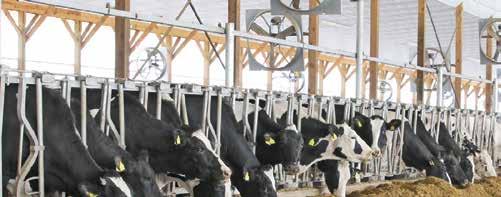




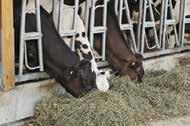
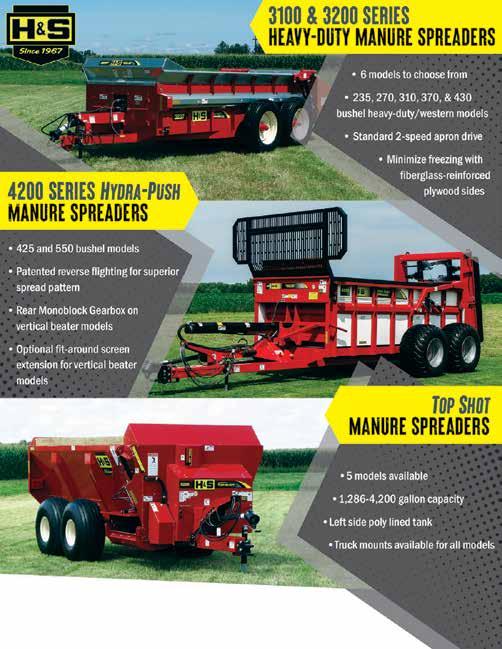






















































































The top-producing cows at Morgan’s farm are giving more than 100 pounds of milk a day and have high butterfat and protein tests and functional type. Morgan’s tank average is between 8590 pounds of milk per cow per day.
Morgan’s daughter, Kayle, has also taken a shine to the cows and helps Morgan in the barn when needed. She has also started showing their cows at the county fair.
“My daughter and her friends are my helpers,” Morgan said. “She and her friends are homeschooled and if I need a milking off, they will milk for me. They are really good workers. I had an accident last year and couldn’t milk for a couple of weeks. So, she had to take care of everything.”
Kayle also helps name the cows and has her own cow family within Morgan’s herd.
“I know all our cows by name,” Morgan said. “We keep the same letter for each cow family. Our top cow family all have names with Zs.”
Morgan also decorates each stall with a festive name tag.
“Every month they get a new theme,” Morgan said. “Right now, they have apples as their name tags. They will get stockings for Decem-
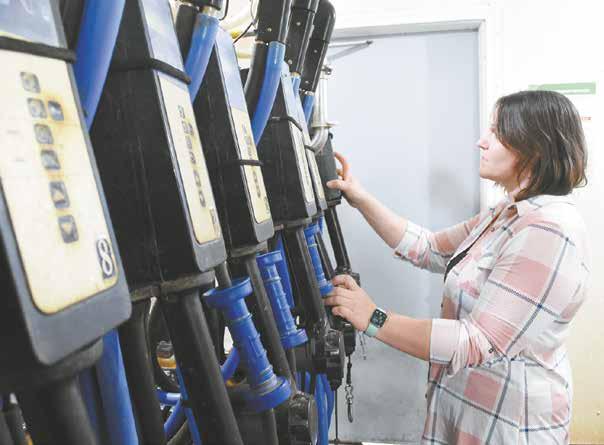
ber, hearts for February and shamrocks for March.
Decorating the stalls is one of the many reasons Morgan likes dairy farming.
“When I was working in town I would get so worked up, stressed out and just mentally drained,” Morgan said. “Now, I get physically tired but I don’t mind that as much because it is so much easier to recover from.”
In the future, Morgan
would like to purchase a farm of her own. In the meantime, she is content with her current set-up.
“Right now, renting works so I am happy doing it this way,” Morgan said. “I like watching them grow up and getting to know their personalities. I talk to them every day and call them by name. It’s peaceful here in the barn — just me and my cows.”
TIFFANY KLAPHAKE/DAIRY STAR
(Le ) Morgan Holker adjusts one of her milking units Oct. 16 at her farm near Lake Henry, Minnesota. Holker started purchasing and milking her own cows in 2020 a er her previous employer was shut down due to the coronavirus pandemic.
(Below) Morgan Holker checks on her heifers Oct. 16 at her farm near Lake Henry, Minnesota. Her dad, Duane, also milks in a rented facility and houses his heifers with hers.


By Emily Breth emily.b@star-pub.com
BEAVER CROSSING, Neb. — At many dairy farms one or two breeds can be found. However, at JJC Jerseys all the major dairy breeds — Ayrshire, Brown Swiss, Guernsey, Jersey, Holstein, Milking Shorthorn and Red & White — can be found along with Dutch Belted cattle and dairy goats.
JJC Jerseys is owned by Jason and Jodi Cast. With the help of their six kids — Garrett, Grant, Ben, Alex, Olivia and Henry — they milk around 210 cows in a double-9 parallel parlor and raise their own youngstock.
“When we rst got into all the breeds, we had ve kids and my husband thought … if we get each one of them their own breed, it will eliminate some of the (problems) that go on when they show,” Jodi Cast said.
All the children help, between schooling and work, and each has their own chores.
Garrett takes care of the
feeding, Olivia cares for the calves, Ben milks the cows and goats and Grant helps to milk cows. Alex will help with milking or feeding depending on who is available.
“They all kind of pitch in and go where they are needed most,” Cast said.
While each of the kids started with their own breed of cattle, they have subsequently added other breeds into their show strings.
Before other breeds were brought to the farm, the Cast family milked Jerseys. One practice that has never changed is their focus on genetics.
“(Jason) always tries to nd what a cow’s weakness is and breed her to a bull that will hopefully correct that in the calf,” Cast said. “He has pretty good success.”
To keep their herd moving forward genetically, they use A.I.
“All of the quadruplets, (Grant, Ben, Alex and Olivia), know how to A.I.,” Cast said. “Ben and Olivia do a pretty good job.”
When making matings,
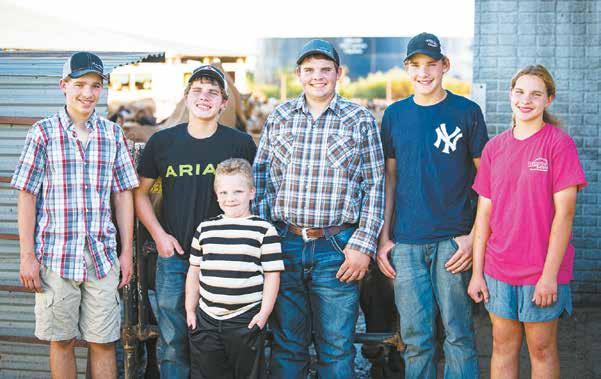
the goal is to get a solid cow. Cast said however they do like having some of the showtype qualities because they enjoy competing.
“This is our life and how we earn money, so we need them to produce,” Cast said. “We have to nd the balance.”
The benet of milking mostly Jerseys is high production and high components,
Cast said. Another positive of the Jerseys is their ability to handle heat. The Cast family’s cattle are housed in two smaller freestall barns.
“We have a hoop shed that has sand free stalls and a freestall barn with mats,” Cast said. “Each group has their own dirt lot so they can get out and walk when the weather is nice. It gives their
legs and feet a break from the concrete.”
When the Casts remodeled their milking parlor more than a decade ago, they designed it for the smaller-sized Jerseys.



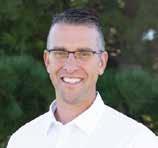

pinecountrybank.com
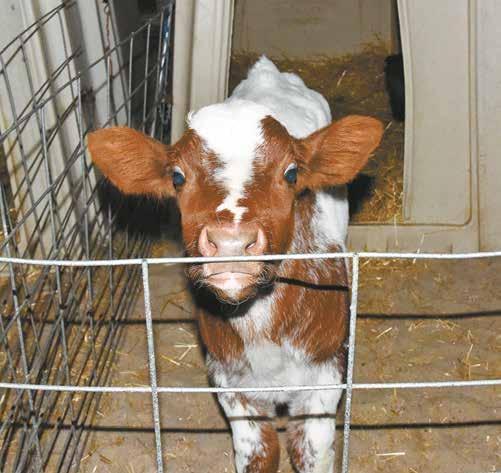
An Ayrshire calf stands in its pen Oct. 15 at JJC Jerseys near Beaver Crossing,
“They made it so the brisket (bar) was pushed in so it would be shorter,” Cast said. “Over the years the cows have changed so much. (Some) are too tall that they have to slump.” The main problem arises when the Holsteins and Brown Swiss cattle are milked. Upon entering the parlor, they stand sideways and take up 2-3 stalls.
Though the family sees ways their facilities could be better, they do not have any plans of remodeling since what they have works well enough for their size operation.
“We don’t have any aspirations to milk thousands (of cows),” Cast said. “That’s not the goal, just enough to sustain who wants to come back and do the dairying.”



































Bobcat telehandlers are designed durable – and built to last – with a combination of tough construction, high-quality materials and features that maximize reliability. Look to the rigid frame, sealed engine compartment and side-by-side cooling design and know it’s ready for the most severe conditions.
Automated Waste Systems, LLC
Hull • 712-439-2081
Reiser Implement, Inc.
Waukon • 563-568-4526
Rexco Equipment
Cedar Rapids • 319-393-2820
Rexco Equipment Farley • 563-744-3393
SOUTH DAKOTA
Bobcat of Brookings, Inc.
Brookings • 605-697-5544
Aldrich Tractor, Inc. Verdale • 218-445-5430
Farm-Rite Equipment, Inc. Dassel • 320-275-2737
Farm-Rite Equipment, Inc. Long Prairie • 320-732-3715
Farm-Rite Equipment, Inc. St. Cloud • 320-240-2085
Farm-Rite Equipment, Inc. Willmar • 320-235-3672
Lano Equipment of Norwood Norwood Young America 952-467-2181
Miller Sellner Slayton, LLC Slayton • 507-836-8571
Sterling Equipment & Repair, Inc. Cottonwood • 507-423-9909
Swanston Equipment Fergus Falls • 218-739-4505 Alexandria • 320-460-8773
Carter & Gruenewald Co., Inc.
Brooklyn • 608-455-2411
Carter & Gruenewald Co., Inc. Juda • 608-934-5201
K&L Bobcat, Inc Darlington • 608-776-4044
Miller Implement Co., Inc. St. Nazianz • 920-773-2800
Miller Implement Co., Inc. & Motorsports of Fond du Lac Fond du Lac • 920-922-8521
Tell us about your family and farm. My husband’s dad started the farm roughly 40 years ago. My husband and I bought the rst half of the cows from Dad in 2015 and currently own the whole herd and the main farm parcel. We employ one full-time worker whom we are very blessed to have. He’s great with the cows, young and old. We also employ a teenage high schooler part time as well, whom we are also very blessed to have. She’s great with all the cows as well and has a strong work ethic.
We milk 88 Holstein, Swiss and Jersey purebreds and crosses with an added cross with Fleckvieh. We have roughly 80 replacement heifers. We also have seven beef cow-calf pairs. We milk in a tiestall barn that holds 60 cows, so we do have to switch cows while milking. We raise all our own heifers on-site and sell all bull calves, usually at weaning. We A.I. all our dairy cows in the barn and have started using A.I. on some of our heifers. Most heifers run with a bull we have on site.
We run roughly 350 acres in a rotational crop (corn, soybeans, alfalfa and small grains) with Dad and Mom. Our half of the crops is used directly for our cows while Dad and Mom use their half as a cash crop. We are currently enrolled in a farm transition program that has been helping to set us up for success. This has been paying off. We are hoping to break ground this fall for a new barn. Stay tuned. The farm is also home to seven beef cows and their babies. We have a few more babies to come this fall. We also have four horses, a Great Dane, and multiple cats. My husband and I have three children, which have been becoming a lot more help on the farm as well. He and I both serve in our local re and emergency medical service departments. Because we are self-employed, we can respond during working hours to help our team and community.
What is a typical day like for you on the dairy? During the school year, I get the kids up and rolling for school. We open-enrolled in a neighboring school district so we do have to get our kids to a bus stop. While I am getting kids ready for school, which is getting easier as they get older, my husband is in the barn milking with our full-time employee and Dad. Dad does all the feeding, while my husband and our employee milk, care for
Burtrum, Minnesota
Morrison County 88 cows
calves and clean the barn. Once I return from the bus stop, I go down to help with whatever is left to nish up. Sometimes milking is just nishing, other times I’m just in time to clean the barn. I will help with calf chores if necessary. Once the main morning chores are completed, we talk about plans for the day. Some days, I do some homecare for a family friend for a few hours a couple of times a week. However, most days entail eld work somewhere. Sometimes it is parts runs, sometimes it is grain bin jobs (my husband has a grain bin business as well — I know, I know, what more can we do), household chores, etc. I am pretty exible, from tractor driving, truck driving, trailer pulling, birthing attendance, ear tag making (I have my own laser engraver to customize our own tags), record keeping, etc. We like to move cattle during the day as well if it is needed. Lunch, well that depends. Either I make it, Mom makes it or we order from local businesses. The afternoon is time to get the kids off the bus, try to get homework and supper done in an hour as we start calf chores and horse chores at 5 p.m., and move into milking after that.
What decision have you made in the last year that has beneted your farm? Utilizing our farm transition program. I would say this has been the biggest for us. We have done a lot this last year to better our dairy in preparation for future expansion, such as calf program changes, housing and feeding changes, breeding program changes, etc.
Tell us about your most memorable experience working on the farm. I would have to say seeing our kids grow up on it. I did not grow up on a farm or even in the country, but raising the kids here, well, it is just so rewarding. The way everyone pitches in so quickly when the words, “the cows are out” are heard.
What have you enjoyed most about dairy farming or your tie to the dairy industry? The people. Farming people are the most down-to-earth people you will ever meet. They will give the shirt off their backs to anyone and not expect anything back. My husband and I both serve on a small board at the facility that we ship our milk to, to try to give back to the farmers who give so much to all the communities we all serve in.
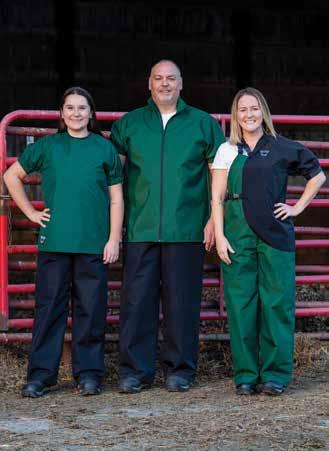

What is your biggest accomplishment in your dairy career? I don’t know yet; we are not done. Currently, I would say purchasing the farm and owning all the cows while planning for future expansion. This industry nowadays is very difcult, physically and mentally. To be able to see progress for ourselves is amazing, along with all the support we have to do this with.
What are things you do to promote your farm or the dairy industry? The biggest I would say is being open and honest with everyone. When people start talking about dairy, talk with them and give them facts vs. talking at them. Explaining farming in its entirety helps them better understand the real life of farming, not the “social media” of farming.
What advice would you give another woman in the dairy industry? Be
positive and become independent. Love your dairy community and they will love you back. Lean on other women in the industry. We women have to stick together.
What is a challenge in the dairy industry you have faced and how did you overcome it? Physical and mental exhaustion. My faith, my family, my friends and farming community and my horses.
When you get a spare moment, what do you do? I love to do anything with my horses. Groundwork, grooming, and riding. I love photography, so I also do some photo shoots here and there. I combined both and work on the private Facebook page I created to give facts about mental health, how equine therapy works, and positive quotes.

























The American Association of Bovine Practitioners had its annual meeting in Columbus, Ohio, from Sept 12-14. Cattle vets, veterinary students and researchers from around the U.S. and Canada met to share the newest research, recommendations and best practices to enhance cattle welfare and help producers improve the health of their cows and the protability of their operations. The rest of this article will describe three current studies presented by researchers from Kansas State University relevant to managing pain in calves.

evaluated for performance, like average daily gain, gain to feed ratio, clinical illness scoring and wound healing, and behavior, like wound licking or lying/standing. Researchers did note some behavioral differences between groups but found that calves banded with lidocaineloaded castration bands did not differ in performance as compared to calves banded with standard bands.
By Whitney Knauer, DVM University of Minnesota
The rst study evaluated a lidocaine-loaded castration band — Lidoband — and its impact on animal welfare and performance postcastration. Castration is a very common management procedure done on a variety of dairy and beef operations, and the Lidoband was introduced to the U.S. market in the fall of 2023. It provides local anesthesia to the banding site in a slow release. In this study, 26 male dairy beef crosses were either castrated with the lidocaine-loaded castration band (13 head) or banded with no pain control (13 head). Calves were followed for seven weeks and

The second study investigated the use of pain management in calves with neonatal calf diarrhea, or scours. Scours is one of the most common diseases affecting beef and dairy calves, and it is likely that it is painful, much like intestinal disorders can be painful for humans. Meloxicam is approved for use as an adjunctive therapy for calf scours in Canada and Europe. Thus, the objective of the presented study was to examine behavioral and physiological outcomes associated with the expression of pain in calves and to evaluate the impact of meloxicam administration on those outcomes. To do this, researchers enrolled 28 calves — 20 with scours and eight healthy controls. The calves with scours received either a meloxicam

OUT OUR LARGE SELECTION
4x4, Loader, Mower, Hydro, 1996 Hours .......................................................$13,500
‘06 N-H TZ-25DA, Cab, 4x4, 1377 Hours .............$5,950
‘17 Case IH 125 Maxxum, MFD, 1750 Hours .....$79,500
‘59 I-H 460 ............................................................$4,000
‘44 Farmall M ........................................................$1,950
‘50 Farmall Cub, white demostrator ......................$3,500 ‘68 Oliver 1750, Loader, Cab ................................$8,900
USED SKIDSTEERS
‘20 E50 Excavator, 5 Hours ................................$72,000
‘22 E35i Excavtor, Cab with A/C, 80 Hours ........$48,500
‘15 418 Mini Exc, 906 Hours ...............................$13,900
‘19 MT-85, 1468 Hours .......................................$16,900
‘04 MT-52, 1238 Hours .......................................$17,900
‘20 T-870, Glass Cab with A/C, 2 Speed, 1475 Hrs ...........................................................$69,500
‘19 T-770, Glass Cab with A/C, 2 Spd, 870 Hrs..$65,000
‘14 T-590, Glass Cab with A/C, 3950 Hrs ...........$32,900
(3) S-76, Glass Cab with A/C, 2 Speed, 680 Hrs and up ................................Starting at $42,500
‘15 S-770, Glass Cab with A/C, 2 Speed, 1775 Hrs ...........................................................$46,900
‘21 S-740, Glass Cab with A/C, 2 Speed, Hi Flow, 6600 Hrs ...........................................................$28,900
(2) 2012 S-650, Glass Cab with A/C, 2 Speed, 2500 Hrs & Up .................................Starting at $28,900
‘14 S-530, Glass Cab & Heater, 2 Speed, 5360 Hrs ...........................................................$19,700
‘02 S-250, Glass Cab with A/C, 6900 Hours .......$17,500

(3) S-185, Glass Cab with A/C, 2000 Hrs and up ..............................Starting at $18,500 ‘92 7753, Glass Cab and Heater, 3600 Hrs ........$10,500 USED TILLAGE W-R 3400, 34’, 4 Bar Spring Tooth Harrow ..........$6,900 W-R 2500, 28’, 4 Bar Spring Tooth Harrow ..........$5,500 W-R 2500, 24.5’, 4 Bar Spring Tooth Harrow .......$3,600 Case I-H 4300, 25’ ................................................$7,500 ‘91 DMI Tigermate, 24.5’, 3 Bar Spring Tooth Harrow .....................................................$6,950
2013 W-R 513 Soil Pro, 7 Shank, Harrow ..........$29,500 2008 W-R 957, 9 Shank, Harrow ........................$12,900 Pepin Spike Harrow, 5 Section .............................$2,500 USED PLANTERS
White 6700, 12x30, Verticle Fold ..........................$5,500
2010 G-P YP1625A, 16x30, Center Fill ..............$39,900 J-D 7200, 12x30..................................................$10,500 USED HAY EQUIPMENT
‘00 N-H 1441 Discbine, 15’ Cut...........................$11,900
‘20 N-H 210 Discbine, 10’ Cut.............................$24,900
‘13 N-H H-6740 Discmower, 7’ 10” cut .................$9,750
‘09 N-H FP-230, Crop Proc, 824 Cornhead, 27P hayhead .....................................................$19,900



bolus at diagnosis and 24 hours later or a placebo bolus at those same times. They were otherwise treated with uid therapy. Healthy calves received placebo boluses as well. Outcomes related to pain and performance were evaluated. Results suggested that calves with scours were indeed in pain, as compared to healthy controls, but that oral meloxicam did not seem to impact measures of pain. The authors state that additional data analysis needs to be performed before a denite conclusion. The last study presented to evaluate pain management for use in calves evaluated the efcacy of a maternal bovine appeasing substance like MBAS or FerApease on pain outcomes after surgical castration and disbudding. Maternal bovine appeasing substance is naturally secreted by the mammary gland and alleviates stress in nursing calves. Thus, researchers wanted to investigate if MBAS, both alone or in combination with other local or systemic analgesics, could provide extended and additional pain and stress relief to calves undergoing disbudding and surgical castration. Research enrolled 49 young bull calves into six different treatment groups:
Dana Adams adam1744@umn.edu 320-204-2968
Joe Armstrong armst225@umn.edu 612.624.3610
Luciano Caixeta lcaixeta@umn.edu 612-625-3130
Gerard Cramer gcramer@umn.edu 612-625-8184
Marcia Endres miendres@umn.edu 612-624-5391
Les Hansen hanse009@umn.edu 612-624-2277
Brad Heins hein0106@umn.edu 320-589-1711
Nathan Hulinsky huli0013@umn.edu 320-203-6104
Karen Johnson ande9495@umn.edu 320-484-4334
Emily Krekelberg krek0033@umn.edu 507-280-2863
lidocaine local anesthesia; lidocaine and meloxicam; lidocaine and MBAS; lidocaine, meloxicam and MBAS; sham procedure; and no analgesia. Outcomes related to calf behavior and performance were evaluated. Results showed no difference between local and systemic analgesics like lidocaine and meloxicam versus MBAS, suggesting that the addition of MBAS to castration and disbudding protocols is not warranted at this time.
From an ethical and welfare perspective, it is important we consider management of pain for both common procedures and disease conditions in our dairy calf and dairy beef populations. While the new products and new applications of existing products tested by researchers did not add pain relief in the applications tested, pain-relieving drugs should be included in protocols for disbudding, castration and other painful conditions that calves experience during the preweaning period.
If you are interested in incorporating new or different products into your existing protocols for calves, reach out to your veterinarian or local extension educator for more information.
Claire LaCanne lacanne@umn.edu 507-332-6109
Brenda Miller nels4220@umn.edu 320-732-4435
Isaac Salfer ijsalfer@umn.edu 320-296-1357
Jim Salfer salfe001@umn.edu 320-203-6093
Mike Schutz mschutz@umn.edu 612-624-1205
Melissa Wilson mlw@umn.edu 612-625-4276
Isaac Haagen hagge041@umn.edu 612-624-7455
Michael Boland boland@umn.edu 612-625-3013
Sabrina Florentino slpore@umn.edu 507-441-1765







Over the past 25 years or so, I have had the opportunity to be involved with several organizations that support dairy farms and the dairy industry with a goal of improving milk quality. In my previous work in Indiana, I was a founding member of Indiana Milk Quality Professionals and had the privilege to serve on the board and eventually as president of the Dairy Practices Council. Now, I have the great honor to serve as an advisor to the Upper Midwest Dairy Industry Association. I remain actively involved because these organizations support dairy industry efforts to foster milk quality.

despite not providing a very exact measure of SCC and being unrealistic to use routinely. Many cow-side tests have been on the market, such as Draminski Mastitis Detector, PortaSCC, UdderCheck, DeLaval Cell Counter and others. Each of these tests can detect mastitis but requires manual collection of a milk sample for testing. Each test represents only a snapshot in time.
By Mike Schutz University of Minnesota
A couple of weeks ago, UMDIA held its annual conference in St. Cloud. My aim here is to relay some key concepts presented by Dr. Jeffrey Bewley, analytics and innovation scientist with Holstein Association USA, on advances in precision dairy farming technologies to support the management of milk quality on the farm.
There are four main goals in processes and technologies used to recognize abnormal milk caused by mastitis. The rst goal is to identify severe clinical mastitis needing immediate action. The second aim is to nd cows with clinical mastitis and mild to moderate clinical infections not needing immediate attention. This includes identifying cases earlier than manual detection so monitoring and possibly early intervention can improve outcomes. To attain less dependency on antibiotics, the growing interest in selective dry cow therapy dictates goal three: to categorize cows and quarters needing attention at drying off. A fourth focus is on monitoring udder health at the herd level, which includes tracking, identifying trends and possibly combining data from multiple sources, such as cow temperatures and electrical conductivity.
Early detection of mastitis has known benets, including reduced labor, the opportunity to segregate abnormal milk, increased biological cure rates, reduced chronic cases, decreased bulk tank somatic cell counts and increased cow well-being. Furthermore, early identication allows earlier decisions on treatment that may include supportive care with nonsteroidal anti-inammatory drugs to manage inammation, the use of probiotics and enhanced nutrition and early culturing for a pathogen-specic approach to management. Recent reports in the Journal of Dairy Science have addressed improved outcomes when NSAIDs are incorporated into treatment strategies to reduce inammation and pain, especially for coliform mastitis.
The search for better methods to identify mastitis earlier is not new. The earliest methods relied on visual appearance and identication of inamed quarters. Forestripping was identied to observe abnormal milk before other physical symptoms appeared. The California Mastitis Test was developed as an affordable and relatively easy way to identify elevated SCC. It remains a useful tool
Miniaturization of sensors and transfer of applications from other industries, including human health, show great potential for use in monitoring mastitis in dairy cattle. A few general examples, without endorsing products by name, are continuous monitoring of milk claw vacuum levels that provide realtime assessment of milking machine function to reduce risk of over milking and teat end impacts; in-line cow level SCC measurement; in-line quarter level SCC measurement; continued enhancements to milk electrical conductivity; milk color sensors that aid in detection of blood and clinical mastitis; core body temperature measured by reticular bolus; infrared thermography to determine elevated skin temperatures associated with inammatory mastitis; use of spectroscopy to determine changes in other milk components associated with Grampositive or Gram-negative bacteria; on-farm genetic mastitis pathogen determination; and use of biosensor and chemical sensor chips to determine a range of altered levels of molecules in milk. One company, GenoCells, has even developed technology to determine SCC of individual cows in a herd from a single bulk tank milk sample by using each cow’s signature DNA in its white blood cells and quantifying them in the bulk tank sample.
While challenges in data capture and sharing remain when using these still very new technologies, the potential for combinations of these measures for early detection of mastitis and determining effective management approaches is exciting. However, Dr. Bewley offered a few precautions:
— Reliance on technology to detect mastitis must not reduce focus on prevention.
— Not all technologies are truly “plug and play” yet.
— Sensors borrowed from other industries cannot always withstand what a cow or farm may do to them.
— Rural broadband connectivity may limit usability in some places.
— Data from some sensors may not target the exact characteristics we want to manage.
— Some technologies may remain too expensive to justify.
— Technologies must never replace the “cow sense” of the manager.
The University of Minnesota is hosting the 2025 U.S. Precision Dairy Conference in Bloomington, Minnesota, June 17-18. Dr. Bewley will be one of the keynote speakers. Also, the Dairy Practices Council will hold its annual conference this year in Madison, Wisconsin, Oct. 28-30, so mark your calendars.





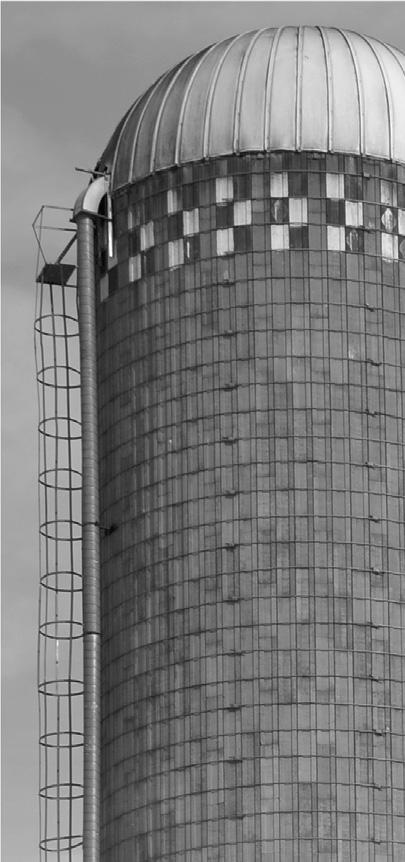


















By Amy Kyllo amy.k@star-pub.com
CALEDONIA, Minn. — When 72-year-old Linda Betz walks into her classic, red, 50-stall tiestall barn, she is alone except for her dairy herd and a collection of barn cats.
Betz milks 14 cows on her 100acre farm near Caledonia. Though she is working on her childhood farm, her journey as a dairy farmer has not been linear.
“You have to have faith and put your trust in God,” Betz said. “This place is my oasis from the rest of the world. I love the farm, I do. It’s always been my rst love.”
In addition to the milking cows, Betz manages six dry cows and 10 breeding-age heifers. She said she would like to buy 10-12 cows this fall if she can afford it.
“I wish my barn was full,” Betz said. “If I had someone younger to help me, it would be full.”
Betz dreams of eventually farming alongside her 22-year-old nephew, Evan Seeger, who is interested in farming. Currently, Seeger is living and working near Fargo, North Dakota, but comes back to help and visit as he is able. In 2021, when Betz had both knees replaced, he ran the farm while she recovered.
Betz said her determination and stubbornness have helped her continue

farming.
“I like what I do,” Betz said. “I’ve done off-farm jobs, and I hated them. I don’t like working with people. I’d rather work with animals. I’d rather be on a tractor and out in the eld. I’m hoping eventually Evan will be here. We’re kindred spirits as far as the farm is concerned.”
The Betz family moved to the farm in 1937. They purchased it in 1947, paying $100 an acre. They raised pigs and milked cows. Betz grew up helping

on the farm and continued to farm with her family after high school.
One of the biggest challenges of her farming career came in 1970, when her dad, Earl, had a stroke, leaving Betz, her brother, David, and her uncle, Dale, to operate the farm while he healed.
“My dad was a ghter,” Betz said. “When he came home, he couldn’t even walk by himself, and he couldn’t feed himself.”
He recovered and farmed again.
“My dad was very determined,”




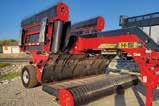

Betz said.
In 1985, her family quit dairy farming, and Betz spent the next 20-plus years milking 5-8 cows, raising bull calves and working on other farms.
In 2007, Betz and her brother, Mike, decided to revive the dairy again. Betz had ve cows and ve springing heifers, and they purchased 17 cows from a neighbor at just above the cullcow price.
“They weren’t bad cows, but they had too many,” Betz said. “They picked some out to cull (group), and we didn’t pay a lot for them.”
The pair replaced the stalls, which were rusting out, and put in a pipeline.
The partnership was short-lived. Two years later, her dad passed away, the 2009 milk prices dropped and her brother decided he wanted to quit dairy farming. Mike wanted to have an auction.
“I said, ‘No, I can’t do that. I don’t want to go back to what I was doing,’” Betz said. “I kept the cows.”
In the following years, Betz received help from family and high school students. Today, though her help has slowly dried up, Betz continues. She said she encourages young people interested in dairy farming to be persistent.
“There’s always a way, if you really want to do it,” Betz said. “You can always gure something out. You have to be determined. I’m doing it because it’s what I’ve always done.”
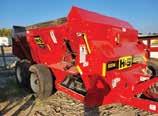

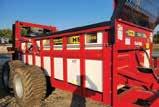

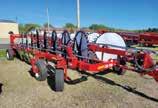


Betz starts her day at 6:30 a.m. She milks the herd before going in for a full breakfast. When she is done, she gives hay to the cows and lets them out of the tie stalls around 11:30 a.m.
Betz feeds her herd cracked corn, hay, pasture and top-dressed mineral and protein. During the winter, they receive corn silage.
Betz has 65 acres of pasture and 36 tillable acres on which she raises 20 acres of alfalfa and 16 acres of corn, all of which is chopped.
During the afternoons, Betz works on projects like haying, gardening or mowing the lawn.
“There’s always something to do,” Betz said. “(What I do) depends on what the day is.”
Growing a garden and preserving food is one of the ways Betz saves money. She and several siblings share
garden produce.
“That’s how we try to make it,” Betz said. “If we didn’t have gardens, we wonder what we would do.”
Betz also limits outsourced labor.
“We do everything ourselves (that) we can,” Betz said. “You don’t hire if you don’t have to.”
Until Seeger returns, Betz will take a step forward each day. A new endeavor for her is growing a beef herd. It currently consists of ve cows and some heifers. She hopes to manage both herds with Seeger eventually, though some have encouraged her to move to only beef.
“I’m just trying to gure out what the best thing is to do,” Betz said. “If milk prices are good, you get a check every two weeks that helps you survive.”
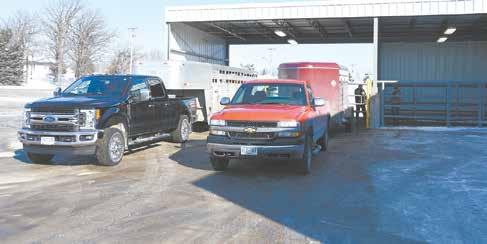
(Le )
(Below) Cows relax in the estall barn Oct. 1 at the farm owned by Linda Betz near
Minnesota.
would like to purchase cows to grow the herd this fall if it is nancially feasible.








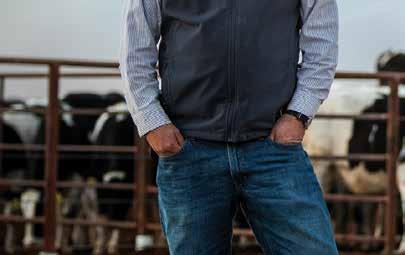









Catch the Dairy Star’s Mark Klaphake with Joe Gill at 6:45 a.m. the 2nd & 4th Fridays of the month on KASM!
Help your calves stay healthy and become higher producing adults.
By Steve Frericks Stearns County FSA executive director
I am not sure if I have ever seen more ideal harvest conditions in my many years of farming than this year. The window of opportunity is wide open for all things harvest-related. Crop dry down has happened very quickly. Yield reports are all over the board, as expected in a year that started very wet and is ending very dry. Manure is being applied, and some tillage applications, while difcult, are happening. The opportunity to harvest fall forages has never been better. While you capitalize on these opportunities, please make sure safety is your main priority.
The U.S. Department of Agriculture announced assistance to eligible organic dairy producers through the Organic Dairy Marketing Assistance Program 2024 to help expand the market for organic dairy and increase the consumption of organic dairy. ODMAP helps mitigate market volatility, higher input and transportation costs and unstable feed supply and prices that have created unique hardships in the organic dairy industry. Specically, through ODMAP 2024, the Farm Service Agency is assisting organic dairy operations with projected marketing costs in 2024, calculated using their marketing costs in 2023. FSA will begin accepting ODMAP 2024 applications Sept. 30. Eligible producers include certied organic dairy operations that produce milk from cows, goats and sheep.
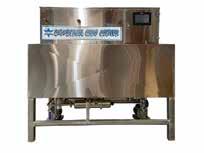


Your Complete Colostrum System—from Cow to Calf! Bagging • Pasteurizing • Cooling • Rewarming • Feeding of Colostrum Lacto-Thermal Technology uses both sides of the refrigeration system to cool and heat water baths to pasteurize, cool, and rewarm colostrum. One-gallon tamperproof colostrum bags allow this technology to maintain quality throughout the processes—all within one system.
• Pasteurizing—uses the heat generated from the chilling system to preheat the water.
• Cooling—immediately chills post-pasteurized colostrum to stop bacteria growth and keep it refrigerated.
• Rewarming—conducts the crucial task of preparing colostrum for feeding without reducing the nutritional
All in the size of a small chest freezer!
STANDALONE PASTEURIZING & FEEDING

H&L CalfExpert Calf Feeder
• Automatic feeder
• Dual wash
• Flexible feeding settings




H&L Milk Taxi 4.0
• Batch pasteurizer/dispenser
• Heats, cools, mixes, transports, & dispenses • Programmable dosing levels

Are you ready to bring your colostrum management to a new level? Milk Jug
• Insulated cooling tank
• Chills & stores raw, pasteurized, or waste milk
• 10-minute wash cycle






Dairy producers who participate in ODMAP 2024 will benet from improvements to provisions outlined in the program. Specically, ODMAP 2024 provides for an increase in the payment rate to $1.68 per hundredweight compared to the previous $1.10 per cwt. Additionally, the production level eligible for marketing cost-share assistance has increased to 9 million pounds compared to the previous 5 million pounds.
How ODMAP 2024 works
ODMAP 2024 provides a one-time cost-share payment based on marketing costs on pounds of organic milk marketed in the 2023 calendar year or estimated 2024 marketing costs for organic dairy operations that have increased milk production or entered the organic dairy market. ODMAP 2024 provides nancial assistance that immediately supports certied organic dairy marketing during 2024, keeping the organic dairy market sustainable until markets return to more normal conditions.
How to apply
FSA is accepting applications from Sept. 30 to Nov. 29. To apply, producers should contact FSA at their local USDA Service Center. To complete the ODMAP 2024 application, producers must certify pounds of 2023 milk production, show documentation of their organic certication and submit a completed application form.
Organic dairy operations are required to provide their USDA certication of organic status conrming operation as an organic dairy in 2024 and 2023 along with the certication of 2023 milk production or estimated 2024 milk production in hundredweights. To learn more about FSA programs, producers can contact their local USDA Service Center. Producers can also prepare maps for acreage reporting as well as manage farm loans and view other farm records data and customer information by logging into their farmers.gov account. If you do not have an account, sign up today.
We know there is a lot of stress in the agriculture community right now. Cash ows are not working for several row crop applications as well as several segments of animal agriculture. If you recognize stress in your family or friends, do not hesitate to get them some help. The Minnesota Farm and Rural Helpline is a free, condential service that provides support for people struggling with stress, anxiety, depression or suicidal thoughts related to farming and rural life. The helpline is available 24/7 and can be reached by calling (833) 600-2670, texting FARMSTRESS to (898) 211, or emailing farmstress@state.mn.us. Farm Service Agency is an equal opportunity lender. Complaints about discrimination should be sent to: Secretary of Agriculture, Washington, D.C., 20250. Visit www.fsa.usda.gov for application forms and updates on USDA programs
Dairy and athletics make a great combination. Dairy products, especially milk, provide excellent nutritional benets and hydration and are popular for post-exercise recovery. In addition to promoting dairy’s nutritional benets, Midwest Dairy highlights dairy’s sustainability story and connects consumers with the farmers behind the products. Midwest Dairy partners with athletes and sports teams to engage enthusiastic fans on their home turf.
Midwest Dairy partnered with the St. Paul Saints this summer. As the season drew to a close, the partnership continued to drive home dairy messaging to baseball fans through in-game activations.
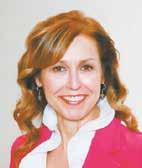
By Tracy J. Behnken Manager, Nebraska farmer relations and communications, Midwest Dairy
During the Sept. 19 game, Rachel Visser, the 71st Princess Kay of the Milky Way, threw out the rst pitch. She later gave a live radio interview discussing her rst month as Princess Kay and highlighted her work as the goodwill ambassador for Minnesota’s dairy farmers. Dairy sustainability messaging aired through live ads during the game. The roughly 6,000 attendees at this Undeniably Dairy game included a University of Minnesota College of Food, Agricultural and Natural Resources Sciences section sponsored by Midwest Dairy, bringing additional focus to the Gen Z demographic interested in learning more about dairy’s sustainability story.
Midwest Dairy and Missouri Farmers Care teamed up again this year. During the June 23 St. Louis Cardinals game, which attracted 37,492 fans, dairy farmer Bethany Bloss from Sarcoxie, Missouri, threw out the ceremonial rst pitch before the Cardinals faced the San Francisco Giants. MFC recently published a prole article about Bloss’ advocacy for animal health and shared it on Facebook.
During Bloss’ rst pitch, a public announcement showcased Missouri farming families’ pride in caring for their animals, producing healthy and delicious food, and engaging in sustainable practices. To commemorate their gameday experience, the rst 10,000 fans ages 15 and younger received a complimentary growth poster featuring Cardinals outelder Lars Nootbaar. The giveaway was one of several components of the 2024 Race to the Plate campaign focused on building consumer trust. Following the opening ceremonies, Midwest Dairy hosted dairy farmer guests and online inuencer friends in a Busch Stadium suite.
Another Midwest Dairy partner is the University of Minnesota. Midwest Dairy had a robust presence at the U of M football game Sept. 21. To build trust with Gen Z, checkoff promoted sustainability, cow care and nutrition awareness with Golden Gophers fans. The U of M hosted a Fan Fest in the Gopher Garden with booths offering fans games, swag and other treats. Midwest Dairy used “Gonna Need Milk for That” signage, swag and an engaging trivia game with a Plinko board to attract tailgaters to the booth. Midway through the pre-game festivities, a ash rainstorm broke out, bringing people together under tents and markedly increasing demand for “Gonna Need Milk for That” drying towels. Overall, the Undeniably Dairy tent engaged approximately 600 consumers.
During the game, Undeniably Dairy messaging was also displayed on the big screen, accompanied by live ads about dairy sustainability. With over 52,000 fans in attendance, this message reached the 10th-largest crowd in Huntington Bank Stadium’s history.
Lastly, Midwest Dairy was proud to be a part of the University of Nebraska-Lincoln’s Husker Mania. Husker Mania is part of Big Red Welcome, an event that welcomes students back to campus. The campus recreation center organizes this event so students can learn more about intramural sports and activities. As a Husker sponsor, Midwest Dairy was able to have a table at the event, where a life-size dairy game, Undeniably Dairy’s Dairy Dash, could be played. The game involved a pair of students playing the roles of a dairy cow and a dairy farmer, competing in four challenges representing cow care. These challenges showed how dairy farmers keep cows comfortable, fed, milked and cared for. Approximately 1,800 students attended this event. Students were lined up the whole night waiting to play, watching others play and learning more about the dairy industry. Dairy ambassadors were a great help with peer-to-peer interactions. Midwest Dairy also used the Undeniably Dairy Dash game during the rst Nebraska football game of the season. The spin wheel was a big hit at the tailgate, allowing fans to learn more about dairy.
The fun at football games did not stop there. As a
Nebraska State Dairy Association ve-star partner, Midwest Dairy was invited to participate in the Nebraska Dairy Tailgate held before the Nebraska Cornhuskers/ Northern Iowa Panthers football game Sept. 14. The tailgate allowed Midwest Dairy staff to share various resources with dairy farmers, explaining the checkoff program’s work in research, trust, the Huskers partnership, the Adopt A Cow program and other helpful information. Also available were Undeniably Dairy gifts such as cow print bandanas and clear bags that could be sported at the game. In addition to plenty of food and drinks, there was excellent networking and engagement among the dairy farmers, advocates and industry leaders. Over 75 farm families and their friends participated in the tailgate.
Volleyball is a major attraction in Nebraska, and Midwest Dairy collaborates closely with a program to engage with consumers. In early September, Midwest Dairy sponsored a Husker volleyball match. Before the game, dairy farmers and a dairy ambassador distributed Undeniably Dairy merchandise and pizza to the students and shared information about their work on a dairy farm. Public address systems shared dairy facts throughout the game, and the Undeniably Dairy logo was prominently displayed on the video board. Midwest Dairy sponsored a serving contest, awarding “If you want a soft serve, go get ice cream” T-shirts to the winners, while additional shirts were thrown out to the crowd. This interactive experience entertained game attendees, with dairy taking center stage throughout the night.






















Summer is over, the days have grown shorter and our instincts are urging us to ll our larders in preparation for the long cold. In essence, we are nothing more than large and mostly-hairless squirrels.
Except many of us no longer store food in the fall. We instead specialize in our jobs and leave the task of preserving and storing food to others.
Not that there is anything wrong with this — the victuals from Industrial Amalgamated Foodstuffs Inc. are probably just ne — but these food items are so perfect, so uniform, that they have all the charm of a gravel pit.
Give me hand-packed pickles that have some personality: sliced unevenly and with maybe a bit too much dill. And I do not mind if my sweet corn includes a dash of silk.
I grew up eating home-baked bread and the veggies that were raised in our farm garden. It was impressed upon us kids that boughten food was inherently inferior. It also cost money, but my grasp of economics was feeble.
At school, we were introduced to the wonders of Wonder Bread. We immediately began to pester our parents to buy Wonder Bread, and they eventually gave in.
Things have come full circle. We will gladly pay extra for “hand-crafted” bread, which, in another time and at another place, was called “homemade.”
When I was a kid, the arrival of the late summer meant the start of the canning season. The kitchen, already sweltering, was turned into a virtual sauna by the army of steaming kettles Mom had standing at attention on our cookstove.
Lugs of stone fruit would appear in the pantry. Peaches, plums, cherries and apricots waited patiently in their wooden crates. None of those things were derided as boughten even though they clearly were not grown on our farm.
A lesson that I learned at that time had to do with plums.
One autumn afternoon, I bit into a so-purple-itwas-almost-black plum and was thunderstruck by its incredible deliciousness. Despite dire warnings, I quickly
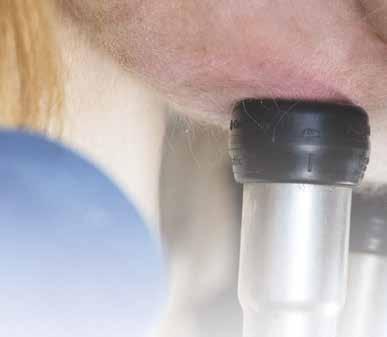

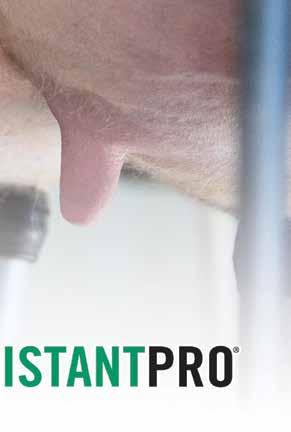

wolfed down about a dozen plums. I soon learned the terrible meaning behind the term “purple revenge.”
Another food-related item that has changed markedly over the years is the number of restaurant meals we consume.
When I was a youngster, eating at a restaurant was a big deal. Restaurant dining was considered wanton and wasteful and the sort of activity you only did on Leap Day — and then only if Leap Day landed on a Friday.
I had my rst bona de restaurant meal when I was about 11. My sister, Janet, had obtained a driver’s license and took her twin, Jane, my sister, Di, and me to Lone’s Cafe in Brookings.
It was a weird experience on many levels.



First was the idea of eating in front of all those strangers. Why would these people — all of them unknown to me — come here to watch me chew?
It was also odd to be served by anyone other than Mom. Who was this mysterious lady carrying food to us? Can we trust her? Is she licensed and bonded?
Hoping to appear suave, I ordered the Italian spaghetti. This was even though all my previous spaghetti experience had involved a guy named Chef Boyardee.
A humungous plate heaped with gleaming, slithery pasta was set before me. I dug into the saucy noodles. Good grief — those things were long. They bore only a slight resemblance to the earthworm-like spaghetti to which I was accustomed.
Spooling the noodles on my fork created a wad approximately the size of a cantaloupe. That would never do. Not knowing the proper protocol for eating such lengthy spaghetti, I decided to simply slurp the stuff, as seen in the movie “Lady and the Tramp.”
This worked ne, except I was not nearly as suave as the Disney dogs. Some of the noodles were approximately a yard long and required a high level of suction. The spaghetti tended to accelerate as it entered the alimentary canal, its end whipping wildly about like the tail of a freshly beheaded snake.
This would have been ne except for the marinara sauce. I noticed that nearby diners were wiping their faces frequently and casting annoyed glances my way. I thought they were overreacting until I got home and found that the hair at the back of my head was plastered with sticky, red sauce. That is pretty much when I gave up on ever being suave.
250HO14310

1,008967141
958934153 250HO15087
87197994 7HO15325

67772092







I resolved to never again eat pasta in public. Besides, Mom had plenty of homegrown tomatoes she could turn into sauce, and we could always raise some decidedly non-boughten spaghetti squash.
Jerry Nelson is a recovering dairy farmer from Volga, South Dakota. He and his wife, Julie, have two sons and live on the farm where Jerry’s great-grandfather homesteaded over 110 years ago. Feel free to email him at jerry.n@dairystar.com.








Providing adequate amounts of quality colostrum to dairy calves within the rst hours after birth improves calf health, growth and lifetime performance. In the fall, many herds are challenged with low colostrum production from fresh cows. This issue appears to be herd-dependent and cow-dependent and is likely affected by several factors.
Environmental factors
Seasonality plays a role in low or insufcient colostrum production.
period. Stalls need to be adequately sized with a comfortable lying surface. Group housing needs to be clean and dry with adequate square footage per cow. Always offer plenty of bunk space and provide heat abatement in the summer months.
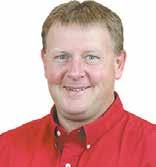
Cows calving in the fall are exposed to long-day photoperiods during later gestation. Ideally, a dry cow would experience eight hours of daylight and 16 hours of darkness. In addition, these same cows are often exposed to heat stress during their dry period. Changes in hormonal pathways associated with colostrum synthesis occur as early as 40-50 days pre-calving.
By Barry Visser Nutritionist
Ambient temperatures are also cooler in the fall. Just as heat stress can be detrimental in the summer months, cold stress can present challenges to dry cows. Cold stress can reduce dry matter intake, reduce mammary blood ow and impair immune reactivity. Water intake can also be a greater challenge in cold weather. Lack of water availability (quality or quantity) will also contribute to lower DMI.
Management factors
Cow comfort plays a signicant role in adequate colostrum production and overall success of the transition
The length of the dry period affects colostrum quantity. A dry period that is less than 30 days signicantly reduces colostrum yield. This appears to be a bigger concern with animals coming into their rst or second lactations. A recent Cornell University study concluded that cows with a dry period shorter than 47 days had 2 pounds less colostrum than cows with a 47- to 67-day dry period.
The timing of colostrum harvest will impact the quality and quantity of colostrum. Make sure staff know the importance of timely colostrum harvest and sufcient milk-out. Excessive udder edema or the presence of mastitis can further complicate the success of the rst milk-out. Although not always practical, some farms have found success harvesting second-milking colostrum from cows with initial low yields while maintaining colostrum quality.
Nutritional factors
Sometimes cows calving in the fall are fed corn silage that was fermented for a year and then are switched to silage that has been fermented for less time. This impacts rumen microbial protein yield and rumen microbial turnover,

which can interrupt DMI.
Dry cow feeds are often lower in energy, but this should not mean lower quality. Remove any feeds from the dry cow ration that have a hint of mold. Certain mycotoxins may interfere with hormonal control of lactogenesis, and negatively impact DMI and immune status.
Nutritional strategies to improve DMI could have a positive impact on colostrum yields. This may require a slight increase in energy in colder weather conditions depending on housing and cow comfort. However, increasing energy appears to have little to do with colostrum yield if nutrient requirements are already met.
Ensure that dry cow rations have adequate concentrations of nutrients that impact immune function, such as
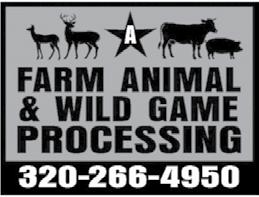
selenium, vitamins A, D, and E, manganese, and magnesium. In some cases, colostrum quantity has improved with the addition of a bypass protein source to increase rumen undegradable protein and improve microbial protein production.
While low colostrum yields are more prevalent in the fall, you may be able to minimize this challenge by focusing on the environmental, management and nutritional factors at play. Looking forward, consider how you might be able to accumulate surplus colostrum in the high-production months to ensure a reserve supply of high-quality colostrum when you need it.
Visser is a nutritionist for Vita Plus.


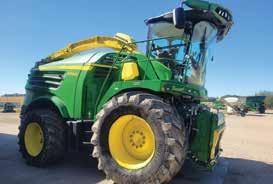




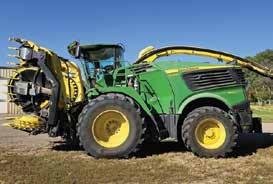




9500 2023,
9600 2019, Kernel Processor, PRWD, 1319 hrs., 866 CH hrs., #532049






Can it truly be the end of another growing season? It seems like just last month Austin was explaining his tillage and planting experiment on the back 40 as we walked through elds of reduced tillage, examining the progress of the emerging plants. Now the crops are in the bins and it is time to start sorting through the numbers to determine if goals were met. In other words, did it make money?
Sometimes we can get lost in the numbers and lose our focus on the real value of the numbers. The highest yields do not necessarily equate to the largest prot. Just like the highest bulk tank average does not always equal the largest return on investment. How much do those last extra bushels or pounds of milk really cost in the larger picture? I’m really excited to hear how Austin’s numbers worked out with his “green planting” project where he direct seeded corn in an alfalfa eld.
The dry conditions have made for a rapid harvest season this year. With such warm temperatures, low humidity and dry southerly winds, the corn moisture has been dropping faster than the New Year’s Eve ball in New York City. We jumped from corn silage to soybeans to high-moisture corn to dry corn harvest in a matter of days. My privacy fence surrounding the house disappeared through the snout of the combine in a few quick rounds. I forgot how busy our road is with feed trucks, livestock trailers and cars whizzing by in a hurry to get somewhere else.
While many people got out of town for the Minnesota Educators Association weekend, Mark and I settled for a Sunday country drive catching the last glimpse of fall colors. The scarlet sumac along the roadways framed the blazing orange sugar maple and vibrant yellow aspen trees tucked in a wooded area of red oak trees. It was stunning as the sunlight
danced off the waving leaves. The strong fall winds have tried their best to displace the beautiful view, but there were still areas of dazzling colors.
The natural decorations sure outshine the Halloween decorations in many yards. Giant skeletons stand guard over the driveway. Inated purple monsters stretch out their hands in the hope of grabbing an unsuspecting intruder. Ghosts dangle from low branches, uttering in the wind. I’m amazed at the lengths some people go to decorate for the season. I’m lucky if I have a few pumpkins lining the steps up to the house.

By Natalie Schmitt






I started thinking about Halloween decorations as I tried to sweep away the cobwebs collecting more dust than ies in the back corners of the barn. As some people purposefully put cobwebs up, I’m tearing them down. I have never seen so many large, fat spiders come to life as I disturbed their hibernation.
I’m trying to remove as many cobwebs as possible before we wash the barn for the year. The spiders have created these magnicent designs to withstand high winds and pelting rain, including the water pressure from a power washer. I am amazed at how much brighter the back of the barn appears once the cobwebs have been cleared. It also helps when the lights are working back there, too. Otherwise, it is like a deep, dark, creepy tunnel lined with tails waiting to swat at unsuspecting visitors. Barn version of a haunted house?
The record-warm temperatures are extending our fall season and hopefully shortening our winter season. The last few years it has felt like channel surng through the seasons, jumping between summer and winter with only a brief click through fall. It was only four years ago this week when we hosted our “Faith in Your Future Sale” where we sold all the milking cows and winter springers. We had over nine inches of snow the days before the sale. It was the earliest snowfall on record.
The barn is now full. The 2-year-olds are now 6. The barn is older, the machinery is wearing down and so are the farmers’ bodies. Future decisions and changes are staring us down like the front side of a double barrel shotgun. Once the dust of the harvest season settles and the fall decorations have been put away, it will be time to plan for next year and the next chapter of life on the farm.
As their four children pursue dairy careers off the family farm, Natalie and Mark Schmitt started an adventure of milking registered Holsteins just because they like good cows on their farm north of Rice, Minnesota.































First, butter made a comeback. Americans love butter’s clean label, minimal processing, and rich, distinctive avor. New research that shows the health benets – not health risks –of consuming dairy fat gave consumers permission to bring butter back into their lives. And they have done so with abandon. Domestic butter consumption has soared to over six pounds per person, up nearly two pounds since 2000.
a powerful antioxidant that helps protect the brain from age-related decline.
Dairy Good Life

Then cottage cheese followed. Protein is having a moment and cottage cheese might be the most versatile high-protein food ever. You can turn cottage cheese into everything from chocolate mousse to queso dip. Cottage cheese sales increased 16 percent year-over-year from May of 2023 to May of 2024. We certainly helped that increase. Five years ago, we bought a carton occasionally; now we regularly buy three-pound tubs and make sure there’s always an extra tub or two in the basement fridge.
Dan wrote a paper for school titled, “Why Milk is a Superfood.” Through the research he did for the paper, he taught his classmates about the benets of galactose on the brain development of children and the protections it offers adult brains.


By Sadie Frericks Columnist
Could uid milk be next? According to a USDA Agricultural Marketing Service report, uid milk sales for 2024 are up 1.1 percent year-to-date. One percent might not seem like much, but for a category that has dropped precipitously since 2009, any movement in the opposite direction is a big deal.
Milk is coming up in everyday conversations, too.
Dan and Monika’s FFA Dairy Cattle Evaluation Team earned an opportunity to compete in the dairy judging contest at the All-American Dairy Show in Harrisburg, Pennsylvania last month. As their coach, I chaperoned the trip. We had dinner one night with the 4-H Dairy Judging Team from Minnesota. After taking our orders, the waitress asked, “Are you guys all dairy farmers or something?” How could you tell, we asked. We had practiced at a farm that afternoon and I was hoping we didn’t smell like cows. She said the giveaway was that we had all ordered milk with our meals. When we told her, yes, we are all connected to dairy farming, she said, “That’s really cool.”
A couple weeks later, on our drive home from World Dairy Expo, we stopped at a Chick-l-a for lunch. Monika asked if she could get a milk with her sandwich. With a big smile, the young lady taking orders said, “Yeah. Sure. I’m a milk girl, too. Some of my friends think I’m weird for ordering milk, but I don’t care.” Monika returned the smile.
New research on milk and human health is shining a positive light on dairy, as well.
Research from the University of Kansas Medical Center made headlines when it showed that consuming milk boosts the brain’s level of glutathione,

Research published last fall in the journal Nutrients veries what dairy farmers have intuitively known for years: Whole milk is best. This specic study showed that pentadecanoic acid, an essential saturated fatty acid found in milkfat, protects heart, metabolic, immune, and liver health.
And whole milk tastes so much better than skim or lowfat milk. The best foods really are the ones that taste great and help us be our healthiest selves.
The next step is getting whole milk back into schools. I believe we have lost a decade’s worth of milk drinkers by forcing schools to serve only skim and low-fat milk. And, as mounting scientic research shows, we have endangered children’s health by doing so. What a shame.
I had hoped that the Whole Milk for Healthy Kids Act would pass and give schools the option to serve whole milk to students. Unfortunately, from what I heard when I was in Washington, D.C., this bill isn’t likely to pass through the Senate. Sen. Debbie Stabenow, the chair of the Senate Ag Committee, told our group that senators are concerned that passing a bill like this would open the door for countless other attempts to legislate school lunch requirements.
Our next opportunity to get whole milk back into schools is through the new dietary guidelines. The nal meeting of the 2025 Dietary Guidelines Advisory Committee, which will set the Dietary Guidelines for Americans for 2025-2030, is happening right now. Once nalized, the dietary guidelines will be used to set the School Nutrition Standards.
Dozens of comments were submitted to the committee extolling the benets of whole milk. Let’s hope that the committee members recognize the scientic evidence that so clearly shows why whole milk is essential to good health.
Including whole milk and wholefat dairy foods in the dietary guidelines would also give our dairy check-off organizations permission to include whole milk in promotions. Imagine what will happen when we can actually promote the health benets of whole milk. We’ve seen before that Americans embrace good-for-you foods that taste good. Fluid milk really could make a comeback.

•
•
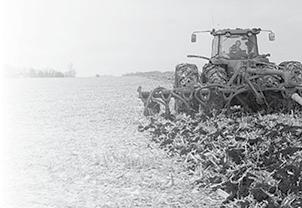



As a dairyman, are you looking to improve the way your fresh cows transi on, take o , peak and breed back? Looking to improve rumen health, rumen func on, overall health, diges on, feed e ciency, and YOUR BOTTOM LINE??? If so, then…
The RECAL line of probio cs is NOT just another probio c on the market. RECAL is a probio c heavily weighted towards be er diges on and uliza on, primarily FIBER DIGESTION. There are a lot of nutrients in your forages that can be u lized by improving diges on.
RECAL is also a probio c that produces more B-vitamins in the rumen of that cow, mainly vitamin B12. B-vitamins are well known to aide in s mula ng appe te, stress, immune system, reproduc on and also very important in rumen diges on.


We o er a thirty-day free trial. What does that consist of you ask? Well, we will give you enough product for thirty days and tell you what to watch for. If you don’t know what to be watching for, how do you know if the product is working and you have to see a di erence and a return on investment. Then, at the end of the thirty days if you say that you saw no di erence and don’t want to con nue feeding the RECAL, you pay absolutely nothing. But if you do like what you are seeing and want to con nue then you pay for the product you used in that thirty-day trial and we keep doing business together. Now, will you see full bene ts of this product in thirty days? Absolutely not. If you don’t see enough bene ts from any product in thirty days then it’s not working for you. Plus, there might be something you are already feeding that could be pulled out. Remember, its not an expense if you see a return on investment. How o en do you see o ers like that?
NUTRITIONISTS DON’T KNOW EVERYTHING. GO BY WHAT THE COWS SAY!!

To improve rumen health. What is the most important part of that cow??? The RUMEN!!!
To improve the overall immune system of your cow. The immune system starts in the RUMEN!!!
To improve diges on and u liza on of the feed that the cows are ea ng. If the feed is going in one end of the cow and coming out the other end of the cow without being digested and u lized, what good is it??? A WASTE!!!
To improve reproduc on. Let’s face it, you don’t make money milking cows unless you are milking FRESH cows!!!
To improve YOUR BOTTOM LINE!!! It’s not about how much milk can we make. It’s about how much MONEY can we make!!!






